BROADENING PERSPECTIVES THROUGH ACADEMIC EXPLORATION




BROADENING PERSPECTIVES THROUGH ACADEMIC EXPLORATION



As part of our ongoing commitment to stretch and challenge our most able pupils, all Academic Scholars at Lingfield College in Years 7–10 undertook an extended project this year, with a significant and enriching development to the format In addition to the traditional option of writing a research essay on a topic of their choice, scholars were also given the option to design and create an artefact accompanied by a written evaluation of its success This broader framework allowed for a greater diversity of scholarly expression and enabled pupils to demonstrate intellectual curiosity, creativity, and analytical thinking in varied and meaningful ways
Whether through essay or artefact, the project encouraged pupils to pursue a topic they are passionate about and to develop key skills such as independent research, time management, evaluation, and critical thinking Supported by our Scholars Sessions and the annual Scholars Trip, this initiative continues to inspire a love of learning and academic exploration

“I b l l d l h d h h l ty of this hi ki g d
A huge well done to all of this year ’ s Academic Scholars for their outstanding work I look forward to celebrating with you at the Scholars Symposium on 4th June, where we will announce the prize-winners for each year group
The EPQ Club also continued to run successfully this year, with Year 8 and Year 10 scholars meeting weekly. The Extended Project Qualification (EPQ), awarded by AQA, supports students in completing their scholars project and rewards their efforts with a nationally recognised Level 1 or Level 2 qualification
In addition to researching their chosen topic, pupils in the EPQ Club completed:
A project proposal
Research using both primary and secondary sources
A written report
A bibliography and appendix
A production log to track their progress
A final evaluation in both written and verbal formats


WAS THE GRAND ETHIOPIAN RENAISSANCE DAM (GERD) TRULY A GRAND-ENVIRONMENTAL SUCCESS OR MADE A GRAND MAN-MADE DISASTER?
CAN ADDRESSING BARRIERS TO HPV VACCINATION SIGNIFICANTLY IMPROVE PUBLIC HEALTH OUTCOMES WITHIN A MEASURABLE TIME FRAME?
HOW DID TRUMP WIN THE ELECTION?
WAS BRITAIN RIGHT TO NOT REVEAL THEY HAD CRACKED ENIGMA?
WHAT ARE THE KEY CHALLENGES IN PREVENTING AND PROSECUTING CYBERCRIME?
IS FASCISM RETURNING IN THE WESTERN WORLD, AND HOW FAR WILL IT GO?

Was
the Grand Ethiopian Renaissance Dam (GERD) truly a Grand-Environmental Success or made a Grand man-made disaster?
Written by Adi P
Completed the Higher Project Qualification
Throughout history, human ambition has shaped nature, with monumental projects, like the Panama Canal, promising progress but sometimes hidden costs. People have long hailed large-scale infrastructures like dams, but each raises the question: can we truly control nature or inviting unforeseen consequences?
The Grand Ethiopian Renaissance Dam (GERD) stands as the latest construction of this complex relationship between human ambition and the environment While the GERD promises Ethiopia a new beginning of energy and development, its long-term environmental and geopolitical effects raise questions, leaving its legacy as a grand success or a grand man-made disaster uncertain
A dam is a structure built across a river to hold water, creating a reservoir or lake (National Geographic, June 21st 2024), supporting industries like agriculture and fishing. There are other uses for dams, (Pewtrusts, September 22 2022) involving: nd
1.Clean water supply
2 Transfer of Nutrients
3 Flood control
4.Preserves a sustainable source of food

The GERD has been pivotal for Ethiopia, raising energy production and helping reach development goals A study shows the GERD will increase Ethiopia’s electricity supply from 1,591MW to 6,000MW (Borgen Project, January 6 2021), providing electricity to over seventysix million Ethiopians The dam’s construction will require a large amount of th manual labour, which
The GERD, a large hydro-power dam located 30km upstream of the border between Sudan and Ethiopia on the Blue Nile in Ethiopia (See Figure 1) in the Benishangul-Gumuz, began its construction on the 2 April, 2011 with a clear aim to increase Ethiopia’s supply of renewable energy On 20 February 2022, it produced electricity for the first time, delivering 375 MW A second 375 MW turbine was commissioned in August 2022 The third and fourth 400 MW turbines were commissioned in August 2024 (MyComply, March 7 2022) Ethiopia’s primary purpose for the dam is electricity production to revive Ethiopia’s energy shortage Now Africa’s largest hydroelectric dam plays a key role in Ethiopia’s energy production and economy nd th th
However, placed within the folds of progress lurks shadows of consequences faced for Ethiopia and its Blue Nile neighbours, especially Egypt, reducing freshwater access, harming agriculture, and worsening desertification Sudan also struggles but lacks capacity to respond due to internal conflict
opens approximately 12,000 jobs for unemployed residents, further stimulating regional and national economies Major flaws exist in the evidence, despite the remarkable possibilities The Borgen Project has only considered the social benefits during the dam’s construction as once finished, these jobs won’t continue, causing unemployment rates to rise again On a larger scale, the GERD may help generate government revenue, improving the quality of life within Ethiopia The dam’s projected renewable energy output is so great, that Ethiopia may export the excess to Somaliland, South Sudan, Tanzania, and other neighbouring nations (Wall Street Journal, July 2024) By doing so, Ethiopia can strengthen global partnerships among their neighbouring nations. Overall, the dam’s job generation, energy and support for the Ethiopian economy makes the GERD an exceptional long-term investment for the country’s future
However, despite the GERD’s commendable intentions, its major consequences cannot be neglected A foremost fear caused by the GERD is that the large reservoir could rapidly accumulate
sediment, reducing the dam’s long-term storage capability A 1992-2020 study (International Hydropower Association (Iha), May 24 2018) of the Blue Nile Basin found rising water and sediment yields, most of it from above the GERD, which will be a necessary water storage and sediment trap, minimising sediment problems, to the benefit of downstream countries, e.g. Egypt and Sudan. Sediment accumulation in reservoirs like the GERD reservoir destabilises aquatic environments by changing habitats, removing nutrients and decreasing oxygen This causes downstream river and coastal erosion, soil fertility reduction, which, over the long term, trapped sediment diminishes the reservoir capacity, impacting their water storage and hydropower potential In mitigating these impacts, upstream soil conservation, sediment bypass channels and dredging are essential for maintaining both reservoir efficiency and ecosystem balance downstream. Without proper sediment management, in the future, detrimental issues may arise Poor sediment control could lead to the dam’s reduced efficiency and longevity People also argue that it doesn’t address sediment buildup, which could result in increased maintenance costs and environmental damage, making a harder to manage situation Mentioned by the Iha study, “the learning watershed has proven how integrated practices can reduce sediment inflow ” The approach focuses towards implementing thorough farming technologies, such as moisture sensors, promoting sustainable land management Through diverting the community’s economic activities towards practices that will retain topsoil, the method not only addresses erosion but ensures that responsible land management becomes self-sustaining Overall, the GERD is expected to trap significant sediment, which will benefit downstream regions by reducing sediment-related issues th
: Impacts beyond the country alone: Implementing the GERD may benefit African countries, posing environmental benefits Research has stated (LSE Blogs, February 28 , 2024) that “after completion of GERD, Sudan can increase its hydropower potential and the country will be able to expand its irrigation area, which could help increase its GDP by up to £66 billion by 2060.” Despite these potential outcomes, the evidence hold flaws For example, LSE Blog’s claim that Sudan’s GDP could increase by £66 billion by 2060 is a long-term projection, potentially inaccurate due to economic, political and environmental changes over time These predictions depend on multiple variables and assumptions that may not work Over a larger scale, the GERD’s changes on other African countries, specifically Sudan, improving Blue Nile water flow, brining many benefits, such as wildlife conservation and reservoirs biodiversity. This aligns with SGD14 & 15: Life Below Water and Life on Land Furthermore, the GERD protects sources of clean water along the Nile, which reduces the chances of disease outbreaks like cholera, correlating with SDG 3 & 6: Good Health and Wellbeing and Clean Water and Sanitation (Sustainable Development Goals) However, the question of whether the GERD’s effects on African countries are beneficial towards their own progress is raised, as this infrastructure may hinder their own development by great water flow reduction. Therefore, an agreement among all GERD-affected nations is crucial in ensuring a brighter, safer future
The GERD contains benefits for other countries despite concerns over water reduction A major concern of the GERD is the potential negative impacts towards other African nations, specifically Egypt, by reducing water flow along the Blue Nile A USC study suggested that filling the GERD
over three years could cut Egypt’s water supply by more than a third, (University of Southern California, 2021) reducing its volume from 55 billion cubic meters (bcm) (Wall Street Journal, July 2024) Additionally, the loss of just 1 bcm water could become detrimental, including losses of a million jobs, eliminating 290,000 Egyptian incomes, 130,000 hectares of lost cultivated land, $150 million food import increase and $430 million in lost agricultural production (Embassy of Egypt, January 19 2021) However, the study focuses primarily on negative effects and doesn’t fully account any potential benefits of the GERD for Egypt, Sudan, and Africa For instance, the dam could help reduce sediment flow, which would otherwise accumulate in Egypt’s reservoirs, such as the Aswan High Dam This silt reduction could prolong these reservoirs lifespans, improving efficient water flow. Furthermore, the GERD holds potential to enhance regional cooperation, if managed through diplomatic agreements. Through a water-sharing and sustainable resource management strategy, Ethiopia, Egypt, and th
Sudan can all benefit from an equitable solution with minimised and maximised benefits Though issues of water scarcity cannot be ignored, the following benefits indicate the GERD has multinational longterm benefits A mitigation strategy approach, with adaptive policies could help Egypt and Sudan divert these challenges while benefiting from the GERD’s positive effects. While Egypt has concerns about the GERD’s impact on its water supply, with proper agreements and cooperation, the dam could support longterm water security, energy access and regional stability
Is it too late, or is a solution still possible?
There may still be hope for a resolution, as maintained diplomatic collaboration over the GERD could lead to agreements, preventing further conflicts and ensuring fair resource distribution. The 1993 Agreement on the Declaration of Principles (DoP), signed between Ethiopia and Egypt, addressed the Nile’s utilisation

and aiming for cooperation The DoP wasn’t specified on the GERD but laid the foundation for cooperation on transboundary water issues (DoP Agreement, 1993) The 2015 DoP, signed by Ethiopia, Egypt, and Sudan, outlined the key principles regarding the construction and operation of the GERD, recognising Ethiopia’s right to build the dam and the need for collaboration among the three countries (DoP Agreement, 2015) Nevertheless, these past treaties present limitations
For example, while the 1993 agreement recognises the importance, towards developing the Nile waters, it fails specifying necessities towards managing, constructions and operations of dams along the Nile, such as the GERD It fails establishing guidelines required for the approval of dam projects by downstream countries, particularly Egypt. In addition, the 2015 agreement places the Egypt- Ethiopia bilateral relationship first with little consideration or official reference to other Nile Basin countries, notably Sudan, being a stakeholder in Nile water management Historically, all agreements signed over time were crucial towards the Nile’s development, providing adequate solutions and regulations to proceed towards the future This correlates with SDG 6: Clean Water and Sanitation (Sustainable Development Goals), ensuring a safe and cleaner future, where people have access to clean water. However, it is imperative that nations along the Nile come to an agreement to respect the river, embracing its natural values, using the source to assist each country’s development
The GERD’s agreement could be considered unrealistic and potentially impossible A major concern about agreements among nations towards the dam is the costly impacts posed if significant changes are required, or that not
all countries will be able to implement changes to be agreed upon due to various internal, ongoing circumstances It’s true that diplomatic collaborations are essential to ensure a justified solution for the controversial crisis of the GERD, especially to guarantee that countries who are facing detrimental impacts, such as Egypt, can become alleviated from their challenges posed by the dam. An idealistic resolution for Egypt is securing additional water resources to mitigate desertification
Although these concerns are justified, the long-term agreements may become impossible to maintain As shown by the Founding director of the climate and water program, middle east institute Mohammed Mahmoud claimed (Wall Street Journal, July 2024) that “ even if there is an agreement, or some kind of commitment from the Sudanese government, they can’t actually implement it, considering the state of conflict that’s happening in their country ” Additionally, many attempts in aim to resolve this ongoing crisis has occurred, from the 2020 Khartoum Agreement, including proposals regarding filling of the dam’s reservoir to resolve future disputes However, this agreement wasn’t fully accepted by all parties, particularly Egypt, as it doesn’t fully address all concerns, all the way towards, the 2020 African Union-led Talks, forging discussion among the three countries (Ethiopia, Sudan and Egypt) and resumed talks in an attempt to reach an agreement for the dam Overall, while several treaties and agreements (primarily in 1993, 2015, and 2020) have occurred, the ongoing issues surrounding the GERD remains unresolved due to disagreements over the GERD’s operation and its downstream water access impact, particularly towards Egypt and Sudan
The GERD could revolutionise Ethiopia’s economy, creating jobs and supplying energy to the 55% deprived of this necessity (Wall Street Journal, July 2024)
(See Figure 2) Therefore, I believe to a certain extent that the GERD can be considered a ‘Grand’ environmental success, benefiting Ethiopia’s economy and downstream countries.
However, as stated by the French author Voltaire, “With great power comes great responsibility ”
With the multitudinous advantages produced by the dam, creating jobs and trapping large amounts of sediment, comes with requirements for comprehensive diplomatic collaborations between African countries, particularly Ethiopia, Egypt and Sudan, guaranteeing a safer and brighter future for not only the Nile but certifying justified circumstances are met and approved by all countries. This presents a vast step towards achieving a utopian region, where no controversy or problems arises
Despite this remarkable future, various consequences still lurk in the Nile Waters, adding more challenges to other countries, such as balancing internal challenges within nations along with restricted water flow downstream, the GERD intensifies the desertification crisis for nations, like Egypt
Stated by the owner of Son-African Industries in Ethiopia, Ketan Patel (Aditya Patel, 2025), “In one word, the GERD gives hope for the nation, helping our country develop and thrive ”
Overall, with right legislations imposed, coupled with adaptations from each country, an advantage-field would flourish as the dam could be used as an extraordinary tool, benefiting many industries, and not be left to become an ineffective, severe consequence for countries ignorant actions

Written by Aryan J
Completed the Higher Project Qualification
The Importance Of HPV Vaccination
Addressing barriers to HPV vaccination can significantly improve public health outcomes in a measurable timeframe. HPV is a common STD infection spread through close skin to skin contact. It takes between 15-20 years for cervical cancer to develop after the initial infection. Each year, an estimated 3300 cases of cervical cancer are diagnosed in the UK (9 women every day), 99.8% of cervical cancer cases could be prevented through HPV vaccination, cervical screening and early treatment of detected cell changes In November 2023, NHS England pledged to eliminate cervical cancer by 2040, aligning with the global cervical cancer elimination strategy vaccinating 90% of girls by age 15, ensuring 70% of women screened for cervical cancer and 90% of women with cervical diseases treated.
The current national coverage rates in England for Year 8 are 72 9% for girls and 67 7% for boys, missing the national target (90%) Within these national averages there exists wide scale inequalities, with some areas and populations experiencing lower coverage rates and worse outcomes Through addressing vaccine hesitancy, increasing education, and improving access to vaccination, vaccination rates can be improved, leading to a reduction in HPVrelated cancers in the next decade
Incidence rates of cervical cancer in the UK are 65% higher in the most deprived quintile compared with the least, highlighting the need for targeting interventions in both vaccination and cervical cancer screening programs.
Public health has recognised the need to reach communities to drive the uptake and address the barriers to vaccination Campaigns, such as “DEFEND YOUR TOMORROW”, supported by the Arsenal Football Team, which is one such campaign allowing to build confidence and encourage the uptake of the vaccination “Just as football is full of moments and decisions that can change the outcome of the game so can life outside the pitch because nearly all cases could be prevented” commented footballer Vinai Venkatesham.
The roadmap of the vaccination strategy is clear by taking a holistic approach, healthcare professionals need to understand how well they are meeting the needs of whole populations that may be underserved by current services and use vaccination to help address heath inequalities and address barriers to vaccination The report thoroughly explores the deep obstacles and various strategies to improve HPV vaccination rates focusing on different strategies and community engagement to address this critical public health issue
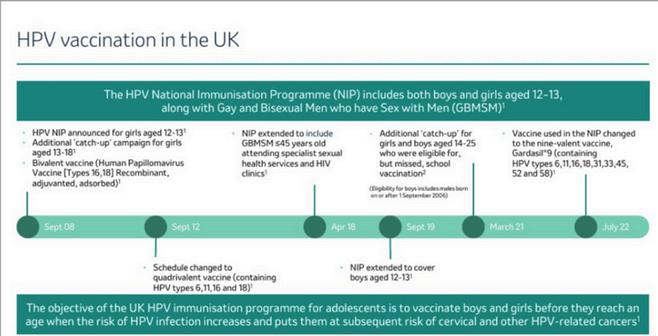
The HPV vaccine is routinely offered in Year 8 with some local authorities running catch up programs in Year 9 and 10 Year 8 coverage will be impacted by both the number of students consenting and how many students were offered the vaccine This means that Year 8 coverage can be used as an indicator of initial uptake and timelines of routine program delivery By Year 9 and 10, catchup will be complete meaning coverage in these students can be used as an indicator of the final level of protection achieved . Figure 1 shows the evolution of the national immunisation program in England for HPV since its launch in 2008, when it was for girls only The scope of the program was extended to a wider cohort with the inclusion of boys in 2019
HPV vaccine coverage by cohorts has been steadily declining and remains lower than pre pandemic levels, this decline follows trends seen across many other routine vaccination programs School Age Immunization Services providers have said the gradual decline in HPV coverage since the COVID-19 pandemic was an increase in the number of non-returned and declined consent forms It is possible that this drop in engagement is linked to
vaccine hesitancy and fatigue following the pandemic There was also significant disruption to HPV program delivery during the COVID- 19 pandemic which is still impacting coverage in some cohorts in Year 10 The UK Health Sectary Agency is urging young people to take up the HPV vaccine in school when offered Dr Sharif Ismale (consultant epidemiologist) said “the HPV vaccine is one of the most
successful globally, now given as just a single dose helping to prevent HPV related cancers from developing in boys and girls, we urge young people to take up this potentially life saving vaccine when offered” Cancer Research UK’s chief executive Micelle Mitchell quoted “ every year around 3300 people are diagnosed with cervical cancer in the UK The science is clear HPV vaccination is safe and effective, and I encourage all eligible people to take up these lifesaving offers”
Today’s figures from NHS England show that at the end of this academic year, over 500,000 girls and boys have been vaccinated with a dose protection against the virus by the end of Year 10, however there are over 50,000 girls and over 70,000 boys in Year 10 who were unvaccinated against HPV
Addressing barriers to HPV vaccination can indeed significantly improve health outcomes within a measurable timeframe
One of the key barriers to HPV vaccination is vaccination hesitancy, which are influenced by lack of confidence in vaccine safety and efficacy resulting in a myriad of barriers Lack of confidence in vaccination policies, lack of effective public heath messaging, spread of misinformation, disinformation, conspiracy theories and rumours through online platforms and finally social disadvantages
The government and faith leaders have united in a national effort to get the county boosted in reducing the risk of HPV Faith leaders, the pillars of many communities across the country have played a vital role for backing the vaccine drive The church can act as an agent of change to drive HPV vaccination promotion Collaboration with faith communities maximises social capital for vaccination promotion
Church leaders hold the trust of their congregation therefore implementation of a church-based intervention utilising the Social Behaviour Change Communication (SBCC) has considerable potential to transform perceptions of the HPV vaccine and increase vaccination uptake. Changing uptake of HPV vaccination requires tailored communication and behaviour change strategies to reach communities experiencing sub optimal coverage Leveraging the pre-established trust within the church with SBCC strategies will likely allow for HPV focus church-based intervention to be affective for the church and possibly other faith groups
Health perceptions such as teenagers believing they are immune and unclear of health benefits for boys receiving the vaccine is one such barrier A crosssectional survey found that 55% of parents surveyed were aware of HPV and the girl’s vaccination program in the UK however only 23% had heard plans to vaccinate boys and continues to be a public health priority Furthermore, there is lack of information provided by schools for parents where English isn’t the first language A recent qualitative study examined reasons around HPV vaccination hesitancy amongst ethnically diverse parents Misunderstanding around longterm risks and limited knowledge about the vaccine were among the main factors. In addition, concerns and uncertainty about the risks and benefits are not always addressed as well as concerns of potential serious side effects Many religions still see HPV as a taboo subject in their household Parents struggle to discuss sex with their children, they will worry they are encouraging promiscuity Eligible young people may not care about having the vaccine and not thinking about the lifethreatening events that will come if not vaccinated Society needs to make the invisible, visible before it’s too late

However, what are the barriers to uptake the HPV Vaccine There is lack of knowledge about benefits and risks of HPV vaccination as well as uncertainty of the link between sexual activity and cancer
The uptake of vaccines may be lower in certain communities and populations, therefore engaging these communities is key to increasing vaccination We must understand the community needs followed by delivering vaccine information in an appropriate setting and seize every opportunity to inform and identify people eligible for vaccination Dr Girdher (GP) discussed the following case study: Tackling vaccine hesitancy through sensitivity in the northwest shows a great example of overcoming certain barriers
Addressing barriers to HPV vaccination can indeed significantly improve health outcomes within a measurable timeframe One of the key barriers to HPV vaccination is vaccination hesitancy, which are influenced by lack of confidence in vaccine safety and efficacy resulting in a myriad of barriers Lack of confidence in vaccination policies, lack of effective public heath messaging, spread of misinformation, disinformation, conspiracy theories and rumours through online platforms and finally social disadvantages
The government and faith leaders have united in a national effort to get the county boosted in reducing the risk of HPV Faith leaders, the pillars of many communities across the country have played a vital role for backing the vaccine drive The church can act as an agent of change to drive HPV vaccination promotion Collaboration with faith communities maximises social capital for vaccination promotion
Church leaders hold the trust of their congregation therefore implementation of a church-based intervention utilising the Social Behaviour Change Communication (SBCC) has considerable potential to transform perceptions of the HPV vaccine and increase vaccination uptake. Changing uptake of HPV vaccination requires tailored communication and behaviour change strategies to reach communities experiencing sub optimal coverage Leveraging the pre-established trust within the church with SBCC strategies will likely allow for HPV focus church-based intervention to be affective for the church and possibly other faith groups
However, what are the barriers to uptake the HPV Vaccine There is lack of knowledge about benefits and risks of HPV vaccination as well as uncertainty of the link between sexual activity and cancer
Blackburn had the lowest HPV vaccine uptake To increase these rates the northwest regions public health commissioning team worked with primary care teams to launch a tailored innovation across 4 primary care networks (PCN) between November 2021 and January 2022 Working with PCNs the regional team developed a personalized initiative for the parents of all unvaccinated Year 8 As Blackburn has a large Muslim community, the region commissioned qualitative insights work to better understand Muslim parents’ concerns regarding children’s vaccination This informed a Q&A in both English and Urdu that the HPV vaccine could be provided safely. By providing personalised invitations and a culturally sensitive Q&A, GP teams were able to build on their connections with local patients and families 8
Amanda Schiller (Director Vaccination UK) commented, the School Health Service in Trafford Local Care Organization (TLCO) delivers vaccinations to Year 8-9 in schools Covering around 21000 people across 19 secondary schools However, a large problem was they were consistently receiving low numbers of consent forms, (17%) uptake from parents Following the nudge calls to outstanding parents in 2022/23 the school public health team uncovered barriers around lack of understanding around HPV and thus the need why their child needed it Language barriers were also an issue with many families across the school’s catchment speaking Panjabi, Farsi or Urdu
To tackle this the school and the TLCO teams attended a parents evening in May 2023 at the school to provide information on the vaccinations available for teenagers and why they are important, with consent forms for parents to complete at the event Multi language posters were
also displayed to reach every member in the audience This proved successful with 47 consent forms being completed
The evaluation of a London Informed event with the Charedi Orthodox Jewish community, a partnership between the NHS and community organizations was working to address barriers to HPV vaccination Their goal was to improve public health outcomes in a measurable timeframe by increasing access and awareness within local communities There was a successful working relationship between community organisations and statutory agencies Effective communication was key when addressing vaccination barriers, focusing on religions, language and cultural beliefs. It needs to deliver the right message to the right group via the right channel Misinformation and Disinformation are factors that need to be tackled
A 2020 study showed that nearly 25% of all tweets containing #HPV had misinformation
Social media, online influencers and political sources drive misinformation Sign posting to reputable scientific sights can display myths or common misconceptions
An added solution could be the use of text messages and social media to hit a larger audience and a wider age group to show the potential threats and misconceptions of the vaccination. EDUCATE, is a theory based educational package which has been designed to be delivered to young people prior to being offered the HPV vaccination to support uptake


Figure 2 highlights how much the Uk should be proud of, their immunisation programs are some of the most comprehensive in the world, protecting people through every stage of their lives from birth to old age, and preventing death from deadly infectious disease
Making vaccination a central role of integrated neighbourhood teams could support a more joined up offer to the public, alignment with other prevention services and joint working with other sectors On a spectrum the UK’s vaccination programs protect all age groups reducing mortality rates and preventing outbreaks and integrating healthcare efforts for comprehensive disease prevention and long-term public health benefits Vaccination is one of the most effective public health interventions in the modern era Childhood vaccines alone prevent between 3.5 million deaths every year across the globe.
Monitoring of HPV confidence over time could help understand the nature of the scale of waning confidence, define issues and intervene appropriately using behaviour science strategies to understand the psychology behind the hesitancy Stakeholders such as teachers, social media platforms and the NHS must provide accurate information and training to help support protection through enhance understanding of the risks and benefits of the HPV vaccination NHS England have put forward a proposal for the future commissioning of HPV vaccination to delegate this service to integrated care boards (ICBs on the 1st of April 2026)
The proposal means from April 2026, ICBs will have the responsibility for a wider range of prevention services for their populations, implementing new programs ensuring vaccination commissioning is less fragmented to drive the uptake of HPV vaccination in this cohort.
Many of the ICBs services are subject to transformation, either now or in the future In my opinion addressing barriers to the HPV vaccination is critical and will significantly improve public health outcomes in the next decade By removing these obstacles, more people will have access to this critical vaccine, aligning with NHS England’s pledge to eliminate cervical cancer in the next decade Increasing uptake through education, communication, and targeted strategies will protect future generations, reduce HPV-related diseases, and improve public health outcomes across the UK HPV related cancers equate to 4 5% of all cancers, globally 640000 cervical cancer cases can be prevented with the HPV vaccination
Written by Emily A

Donald Trump has won the election for a second time, but why do so many voters continue to support him despite the controversies surrounding him? In July 2024, Trump was convicted of thirty-four felony counts, and when he lost the 2020 election, he incited a violent riot, yet Trump still got the majority vote in the 2024 election For many, Trump's appeal is rooted in his stance on immigration control, and his promised tax codes. People with a high school diploma or lower were likelier to vote for Trump, whereas people who had a college degree or secondary education were more likely to vote for Kamala Harris
Does this correlation mean that Trump does better for people with fewer highpaying job prospects, or are people with more education, more likely to vote for Kamala Harris because they have researched the topic? The main reason people say they did not vote for Kamala is that Harris did not do enough as other vicepresidents, as she did not help the immigration problem, and some said that a woman is “too emotional” to be President People who voted for Kamala were more likely to have voted against Trump instead of for Harris than people voting against Harris when voting for Trump. What is it about Trump that divides the country, either supporting him, or hating him?
Donald Trump is a felon and was found guilty of 34 criminal counts of falsifying business records and has a history of being racist and inciting violence, but many believe he would make a better president than Kamala Harris, is this because of a difference in policies, or is it because Kamala is a woman? Plenty of critics say that Kamala did not do enough as vicepresident, including Trump, who said she was the “worst vice president in the history of our country” even though Kamala broke the record for casting the most tie-breaking senate votes out of any vice-president in history. Two scholars who have studied vice presidency ranked Harris at 11th out of eighteen modern vice presidents (post-1933) Harris “offset Biden in just about every important way ” She is Generation X instead of a Boomer, a multiracial woman of colour instead of a white man, and she lived in the Bay Area, California, instead of the East Coast This is a balance that Trump and J D Vance do not have, they are both white men and Trump is from New York, and Vance is from Ohio
Donald Trump also spreads lots of lies about Kamala Harris and many other issues, which may be why people voted for him He said that Harris is “totally against the Jewish people” even though she has been married to Doug Emhoff, a Jewish man, for 10 years However, plenty of people believe that Trump would not lie in a Rally, and do not fact check what he says This leads to a lot of misinformation, Donald Trump told over thirty thousand lies whilst in office, around twenty-one per day. This could mean lots of people voting for him do not know what he stands for and just see Kamala as a threat to the immigration problem.
He recently sparked outrage because of a hate speech he said on TikTok In the video, he said many outrageous things, including, “We control your bodies” and that there will “ never be a female president.” This speech has caused many to be distraught, and for some proves that Trump only won because of Harris’ gender
However, many Trump supporters say that they voted for him because of his policy on immigration Trump vowed to seal the border by completing the construction of a wall and increasing enforcement Trump's policy against immigration is stricter, whereas Kamala promised a more humane approach. Many immigrants leave violence and economic instability, which is why some people find it so problematic However, some immigrants are abused and go to America for a safe life, whilst trying to contribute to the economy When Biden was in charge, the migrant numbers at the US-Mexico border increased drastically. Since January 2021, when Joe Biden came into office, around eight million migrants came over the border with Mexico, whereas under Trump's administration there were only 2 4 million encounters at the border Many Republicans say that Biden’s “weak” policies on immigration encourage migrants to travel illegally to the US.

Since Donald Trump won, a lot of creators have said misogynistic comments Nick Fuentes is an American far–right political pundit who promotes misogynistic, white supremacist, and antisemitic views, His YouTube page has been permanently removed in 2020 for violating their hate speech policy
However, Biden issued an order to deport migrants at the border This meant that migrants could be sent back to their native country without having their asylum claims processed, if the average number of weekly encounters exceeded a certain threshold One month after this order was introduced, encounters at the southern border fell by a fifth This shows that Biden did help with the immigrant issue, and the more humane policies do work while treating illegal migrants humanely. Undocumented workers make up 25% of all farm workers in the US and most of those workers put in at least 10 hours of work per day in arduous conditions to feed American workers They also make up 19% of maintenance workers, and they tend to work on low wages for 12-hour shifts, often 7 days a week. Seventeen percent of US construction workers and 12% of food preparation and serving workers are undocumented

Undocumented immigrants also pay billions of dollars in tax annually Households headed by unauthorized immigrants paid $10 6 billion in state and local taxes in 2010 Per one hundred thousand residents, only 1032 undocumented immigrants committed crimes as opposed to 1,595 native – born Americans This shows that welcoming immigrants into American communities can strengthen public safety and are less likely to commit crimes than the U Sborn This is true for both violent and non-violent crime, this proves that Trump is lying about the threat of illegal migrants, and that is part of the reason for him getting votes
Many working-class people voted for Trump because of the rocketing grocery prices because food cost less when he was president In August 2024, Donald Trump delivered a press conference around the prices of packaged foods, meats, produce, condiments, and eggs. He said that when he wins, he would "immediately bring prices down, starting on day one " For many years, rising prices had taken a toll on their livelihoods
However, Trump has instead focused on mass deportations and pardoning January 6th attackers, so prices have been increasing more and more, for example, because of a deadly bird flu egg prices have increased a huge amount with lots of reports of one dozen eggs being $12, a problem that affects so many Americans Vice President JD Vance commented that prices will come down, but it will take " a little bit of time". Many economists have countered Trump's vows to drop prices saying that a broad-based price decline would be dangerous for the economy by creating a "doom loop" and that they would be impossible to achieve Tyler Schipper said that " no president can lower prices in a week" and that Donald Trump's promises about how quickly these
prices will drop are unachievable Trump has argued that he can bring food prices down by drilling more oil domestically. This is a problem because the US is producing more oil than any country in history Trump also plans to restrict food imports, and let American farmers go to work Targeted tariffs for security such as strategic food produced by China or tariffs designed to nurture domestic firms that pay high wages do have some intellectual support, although economist rejects them However, Trump is planning on a tariff not just on strategic items but on every import, including food There is no economic basis for imposing a tariff for the United States. Food tariffs simply increase food prices. This shows how Trump was never going to reduce food prices, but because he often says he will, those who voted for him believed that he would
Many democrats believe that the election may have been rigged Trump frequently pushed the unproven claim that the 2020 election was rigged in favour of Joe Biden There are new allegations of vote manipulation in the 2024 election where Trump defeated Kamala Harris. Two election integrity groups have suggested that analysis of voting behaviour in 2024 swing states could indicate some irregularities All allegations of a rigged election are speculative, and no investigations are examining the claims, and these claims have not contested the election The Election Truth Alliance, a nonpartisan nonprofit organization, said that its analysis in Clark County, Nevada produced results “consistent with vote manipulation ” These claims were based on the drop-off vote rate in Nevada, a swing state that Trump won in 2024, which was higher than the national average for presidential elections. Drop off vote refers to the difference between votes cast in the presidential race and those cast in the statewide election held the same day
The Election Truth alliance also said that there was an apparent “spike” in

Conclusion
In conclusion, the 2024 election results reflect a deep divide in America, where personal biases, misinformation, and differing priorities shaped the outcomes Despite the controversies surrounding Donald Trump, including his criminal convictions and rhetoric, many voters continued to support him because of his stance on key issues such as immigration, taxes, and promises to address the economic struggles of the working class Trump’s misinformation, and inflammatory remarks have created a stark contrast to Kamala Harris, whose gender, background, and perceived lack of effectiveness as vice president have become focal points for criticism. Although accusations of election manipulation have emerged, the allegations remain speculative, adding further complexity to the conversation. The divide between Trump and Harris is not just about policies but is rooted in deep-seated ideological, racial, and gender-related tensions that continue to shape the political landscape The nation’s political future will depend on whether these divisions can be addressed, and whether voters choose to prioritize facts, unity, and solutions over partisanship and identity-driven rhetoric
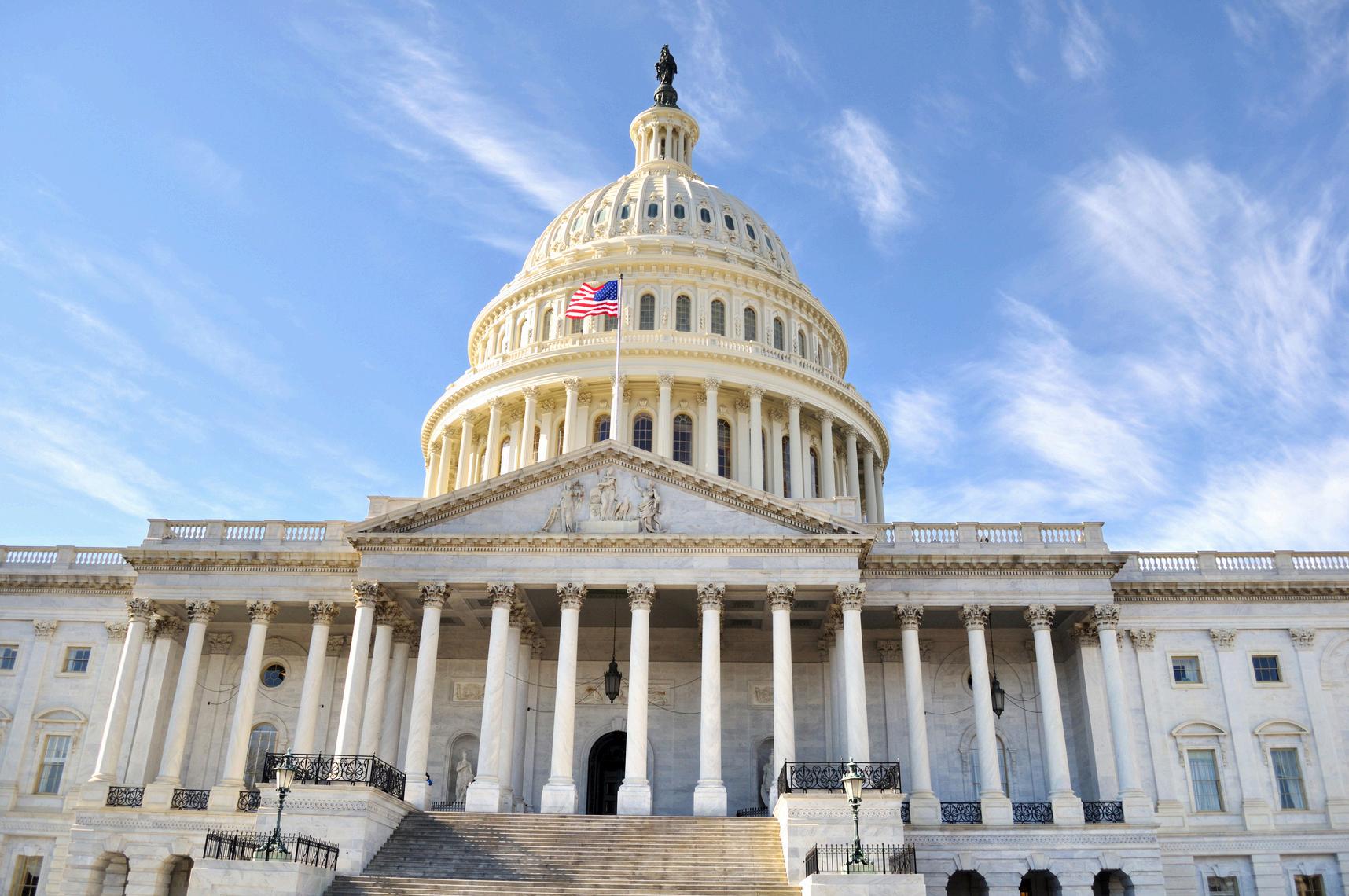
Written by Eleanor R

The Enigma machines were cipher devices, used in the 20th century. They were complex machines with over 158 quintillion different settings, which changed every day It is commonly thought that despite the technological advancements over the last 75 years, Enigma would be nearly impossible to crack today But with the combined efforts of Marian Rejewski in the 1930’s and Alan Turing and his Hut 8 team in 1940, the impregnable Enigma was broken by the Bombe machine This is thought to have saved millions of lives, but how many more could have been saved if Britain had acted upon all the intel they had been able to gather from intercepted messages? By 1943, just 3 years after Enigma was broken for the first time, 84,000 Enigma-encrypted messages were being decoded every month
It should be noted that Enigma is not one single code, but rather a family of machines derived from the same Reichswehr D machine that all held a Switchboard At some time or another during the war, all Enigma machines were cracked
Despite his love for fairytales, Turing was highly scientific and made significant contributions to the Bletchley Park (BP) work However, until the release of 'The Imitation Game' in 2014 his name was barely known, despite his royal pardon just a year prior This essay aims to highlight the injustice brought to one of our nation's greatest heroes, who was deemed a criminal despite his efforts to save this country, emphasise the crucial work that took place at BP and debate whether Britain was right to 'strategically' choose which attacks to thwart with their knowledge.
If Polish cryptographer Marian Rejewski cracked Enigma and made the early ‘Bomba’ machine, why did Alan Turing have to create and improve the infamous Bombe machine? The Germans added another 2 wheels which rendered the previous knowledge obsolete, as it changed the protocols and the number of combinations possible completely Additionally, Marian Rejewski’s work was carried out based on the error-checking system, which meant all messages were sent twice with a 3-letter message code, so you could figure out the message setting, and thus set this code on your own device to solve the rest of the message However, this only worked for one message, and once the German military realised that it was a weakness, they stopped doing it
It is commonly thought that the German military at least suspected that it had been broken, after their ability to sink Allied ships greatly decreased in 1942 Apparently, this was not enough evidence for them to consider making the investment to improve/ change Enigma, and their success rate was not 0%, so perhaps it was considered a strategy flaw or a mole But, even if they had, this adjustment would have had to been made to over 30,000 machines, and human error would have provided vulnerabilities for BP to find regardless, how much difference would it have truly
many Axis power attacks Historians believe this could have shortened the war by up to 2 years, saved many front-line supplies from being sunk, allowed several plans consisting of misdirection to come to fruition, saved upwards of 14 million lives, not including civilians dying from famine (Atlantic blockade), displacement (Bomb attacks) and disease (smoke, contaminated water & crowded, dirty shelters)
Turing’s work was mainly based on naval Enigma, as Marian Rejewski’s work solved a lot of army/air force enigma As far as we know, Germans never cracked Typex or One-time pads, though they did crack some lower-level codes, but these were not typically used for vital information With this advantage, Britain could have quickly domineered WW2, especially as they already used Enigma to misdirect and confuse the Nazis. Some examples of this include:


The BP operation was highly classified until the 1970’s, which is most likely when the public truly saw the work that went into winning the war, and when the German public realised that their ‘unbreakable’ code had been broken
The probability of the Allies winning the war, was considered much greater than the alternative, especially once USA and USSR joined, and many ‘neutral’ countries aided through volunteers or diplomatic efforts, some countries, such as Italy, switched sides By keeping the Bombe machine secret, and the knowledge gained from Enigma kept between few, the Allies could avoid
Operation Bodyguard
Operation Mincemeat/ Operation Barclay
Operation Zeppelin
Operation Cascade

The general essence of most of these was sending false messages on a stolen Enigma machine, in order to trick Axis parties as to where and when attacks were and seeing through the reply if the deception had worked to see if they should continue with the real plan. Operation Mincemeat and Barclay sent most Axis forces to Greece, instead of Sicily where the real invasion happened, leading to a successful D-day invasion, which is commonly contributed to the Allied win in WW2
The codename ‘Ultra’ refers to the interception of German messages, which also alerted to spies on multiple occasions, and led to the Double Cross system, basically Nazi agents who were found or turned themselves in, would deliver false messages verbally to the Germans. In 1945, John C. Masterman wrote that MI5 “controlled the German Espionage system”, because no German agents were successful, without being captured, double-crossing Germany or just losing motivation, bar one who committed suicide Though the first few attempts were futile, a system (although later shut down) was eventually built, and MI5 learnt how Abwehr (the government agency) worked, and how double agents might be useful
A different Enigma machine was captured in Algiers, which was the same type used by Abwehr which helped with the decoding of German messages, as it had no plugboard A particularly imaginative agent ‘Garbo’ created an entire fake network to convince the German’s he was spying in the UK, was absorbed by the Double-cross system, and the German’s relied on him and the other Double cross agents that they sent few others, a massive help to Britain
The argument many have is the ethical dilemma of having to let some attacks occur to keep the decryption secret, effectively choosing which ships, which soldiers to sacrifice
How do you choose whose father, brother, son, husband should be attacked whilst trying to simply serve their country? U-boats were sunk if the Allies felt like it would have been too obvious for them to have predicted the attack, they had to be cautious, but often too much is not a good thing. British cryptographers were reluctant to share the information with USA, which created an animosity between the Allies
After the war, the stolen Enigma machines were either gifted or sold to developing countries, often earlier members of various colonies and empires, without telling them how to solve it meaning Britain could still spy on former allies for several years after the War
Mainland Europe resistance groups who relied on information from Britain often went ahead with missions without the full information (withheld to prevent German suspicion), increasing the chance of failure, and number of unnecessary casualties The most famous example of this was the 1944 Warsaw Uprising, where 200,000 Polish civilians were killed after the Polish Home Army attempted to reclaim Warsaw, and after a 63-day battle, failed It is thought that with the full information, this attempt could have been better organised or even postponed until reinforcements arrived
Additionally, the Nazis used radio and encrypted messages to communicate about mass movement of Jews, those with disabilities, homosexuals, Gypsies, Poles and black people, also known as targets of the Holocaust It is a major argument that war crimes such as the holocaust could have been prevented, or the effects lessened if the British had acted on their full intelligence, by warning people, putting diplomatic pressure on neutral countries to provide refuge for those escaping or destroying access routes to concentration/extermination camps.
To reveal Enigma intelligence, or at least to act upon it in such a way as not to reveal the decryption, might have stopped some of the worst atrocities of World War II The moral question was whether the greater long-term strategic advantage of maintaining Enigma was more important than the short-term present moral imperative to save human lives.
If Germany had learnt of the decryption, it would have been a very disorganised process to change out all the devices, as well as expensive, which would have diverted Germany’s resources away from fighting and the Holocaust The confusion and delay in switching out 30,000 machines would have also provided a strategical advantage for the Allies

If Germany no longer knew which messages were true, it could have led to operational inefficiencies and distrust among its soldiers, leaders and civilians
In conclusion, there are positives and negatives to both arguments, but many more lives could theoretically have been saved if Britain had acted on everything they knew Of course, this isn’t certain, as it’s a prediction with often some very specific circumstances and assumptions, but overall, it may have been much more beneficial than the elusive operations otherwise taking place

Written by Harry W
Cybercrime is a growing threat that has become “ one of the most significant issues of our digital age ” Ransomware and data breaches, cyber espionage, internet fraud, and the ever-changing nature of cybercrime are significant challenges for criminal justice and law enforcement agencies. “The technological revolution, whilst improving cyber defence efforts, has also equipped cyber criminals with more advanced tools”
This is even more challenging to stop and prosecute such crimes, with criminals exploiting available weaknesses; namely, the “limited global reach of cybercrime forces investigators to deal with complex, multinational, ethical dilemmas and policies” The anonymity of the internet and the ongoing evolution of hacking techniques also make it all the more challenging to locate and prosecute criminals. “The ineffective technical proficiency of law enforcement agencies and impairment in recovering digital evidence also deters effective prosecution” The rapid pace of technological advancement guarantees that the law remains at a disadvantage in terms of the race with evolving newly emerging cyber threats Governments and institutions will be forced to develop more comprehensive and cohesive strategies as a response to the growing threat
Real-life instances highlight the challenges. The 2017 WannaCry ransomware attack “hit over 200,000 computers across 150 countries, paralysing hospitals, companies, and government ministries” “The 2013 Yahoo breach of 3 billion user accounts'”[7] data indicates the enormous scale of cyber-attacks “The 2016 Russian hacking of the U.S. elections is another example, where cyber attackers seemingly hacked into voting systems and social media to sway public opinion
While cybercrime is a severe problem, it can be prevented in many ways From cybersecurity to awareness and education, from stronger laws and international cooperation to protecting businesses and critical infrastructure, to combating online fraud and financial crime To secure the digital world, governments, corporations, and individuals all have responsibilities
One of the best strategies to stop cybercrime is to strengthen cybersecurity defences. “Among the techniques that can be used to keep sensitive information safe from cybercriminals are multi-factor authentication (MFA), secure password policies, and data encryption” Patch management and regular software updates eliminate vulnerabilities before hackers can exploit them
By detecting and preventing intrusions, firewalls and intrusion detection systems (IDS) offer an additional degree of security Additionally, machine learning and artificial intelligence in cyber defence help detect anomalous activity and counterattack threats instantly Public education and awareness go a long way in reducing the success rate of cyberattacks “90% of cyberattacks, such as malware and phishing attacks, rely on human errors for their success ”
Employee cybersecurity awareness training and public awareness campaigns can educate people about how to recognise and avoid online threats.
Schools and universities should also incorporate cyber hygiene practices in their curriculum so that the next generation is well aware of how to browse the internet and digitally interact safely
Cybercriminals typically operate in crossborder areas, and hence, it is also challenging for law enforcement. Governments need to come up with improved cybercrime legislation and work together globally to track and prosecute offenders “Organisations like INTERPOL and Europol attempt to enable border-toborder investigations and coordinate cybercrime law enforcement”
Enhancing the laws to make them more appropriate for new digital threats such as AI-based hacking and cryptocurrency fraud is also an essential step in keeping the law current in the rapidly changing digital world Companies, especially those dealing with sensitive financial and personal information, should have good cybersecurity measures in place Security scanning, penetration testing, and backup data systems ensure that any potential vulnerabilities are discovered and corrected Companies also need to employ a zero-trust security model, where all users or devices that try to log into the system are presumed to be threats until they can be authenticated. Maintenance of critical infrastructure, such as banking networks, electrical power grids, and healthcare systems, is especially crucial since hacking these systems can have tangible, real-world implications Cyberterrorists assault the financial sector in the way of credit card loss, identity theft, and web fraud Fraud detection tools, biometric verification, and time-based scrutiny of transactions can verify and hinder financial fraud by institutions Greater regulatory intervention and monitoring of cryptocurrency payment can restrain the usage of electronic money for ransomware payment and money laundering.

Cybercrime is a troublesome issue for police and legal systems worldwide The strategy for preventing and prosecuting cybercrime evolves along with technology Cybercriminals target governments, corporations, and individuals by taking advantage of weaknesses in electronic infrastructure The growing dependence on technology has made it easier for cybercriminals to carry out attacks, which can range from widespread ransomware attacks to identity theft and financial fraud Law enforcement agencies are unable to effectively respond due to their lack of resources and outdated investigative strategies Moreover, cybercriminals usually use sophisticated methods such as phishing, malware, and social engineering to deceive the victims, and detection and prosecution become even more difficult Some of the prevention and conviction difficulties faced in cybercrime are jurisdictional, anonymity, the rapid evolution of technology, difficulties in obtaining digital evidence, and outdated laws
One of the most significant hurdles in conducting cybercrime investigations is jurisdictional complexity Most cybercriminals work from different countries, and therefore it is hard to identify which country has jurisdiction over the case Different nations have different laws, and some lack strong cybercrime laws, which allow offenders to evade punishment. While coordination between international law enforcement agencies is a slow and challenging process, international collaboration is essential Cybercriminals' anonymity is the second issue “The dark web, VPNs, and encryption are used by criminals to conceal their identities, making tracing more difficult” Because cybercrimes don't yield physical evidence like traditional crimes do, it's easy for criminals to carry out their operations undetected Hackers frequently use botnets and proxy servers to launch attacks from different locations, which makes investigations more difficult.
Another difficulty is the speed at which technology is changing Cybercriminals are constantly developing new hacking methods, and law enforcement is having a hard time keeping up with emerging threats Artificial intelligence, deepfakes, and super malware pose new risks that
Convicting and prosecuting cybercriminals is one of the most difficult tasks facing modern legal systems Unlike traditional crimes, cybercrimes often leave little physical evidence, involve multiple jurisdictions, and allow criminals to operate anonymously These factors, combined

can't always be countered by old-fashioned investigative techniques Law enforcement agencies typically lack the technical capability and resources to invest in stateof-the-art cybersecurity tools and training Additionally, collection and storage of digital evidence is one of the largest challenges in prosecuting cybercrime Digital evidence can be erased, altered, or encrypted at will by criminals Integrity and legality of evidence preservation and chain of custody maintenance are essential, but most law enforcement agencies lack standardised procedures for digital forensics handling
Last, but not least, archaic laws hinder convictions of cybercrimes Emerging cyber threats like ransomware, cryptocurrency scams, and AI attacks are not sufficiently covered by the majority of current laws, which were passed for more traditional offenses To improve cybercrime prevention and prosecution, legal mechanisms must be modernized, and cross border cooperation must be strengthened
with the rapid evolution of digital threats, outdated legislation, and difficulties in collecting admissible evidence, make securing convictions increasingly challenging
One of the biggest obstacles to prosecuting cybercrimes is jurisdictional complexity. It can be difficult to determine which nation has the authority to file charges because cybercriminals frequently target victims across several nations Legal systems around the world vary widely, and some countries have weak laws against cybercrime, which gives criminals a safe haven Even when there is international cooperation, slow and ineffective extradition procedures can delay or even stop prosecution Without explicit international agreements, many cybercriminals avoid justice.
Another major barrier is the anonymity of cybercriminals “Cybercriminals use sophisticated methods like VPNs, the dark web, and encrypted communication to hide their identities”, in contrast to physical crimes where evidence like fingerprints or CCTV footage can be used

In order to launch attacks from multiple locations, many attackers also use proxy servers and botnets, which makes it challenging to identify the original attacker Because prosecutors must establish beyond a reasonable doubt that a particular person committed the crime, the absence of identifiable evidence makes it extremely difficult to secure a conviction. There are also significant security risks associated with gathering and preserving digital evidence Because cybercriminals can erase, encrypt, or alter data, it can be challenging for law enforcement to recover important evidence Furthermore, because improperly handled evidence might not be admissible in court, it is crucial to maintain the chain of custody for digital evidence When law enforcement agencies lack specialized forensic resources and training, it becomes more challenging for them to make compelling court cases.
In order to launch attacks from multiple locations, many attackers also use proxy servers and botnets, which makes it challenging to identify the original attacker Because prosecutors must establish beyond a reasonable doubt that a particular person committed the crime, the absence of identifiable evidence makes it extremely difficult to secure a conviction There are also significant security risks associated with gathering and preserving digital evidence. Because cybercriminals can erase, encrypt, or alter data, it can be challenging for law enforcement to recover important evidence Furthermore, because improperly handled evidence might not be admissible in court, it is crucial to maintain the chain of custody for digital evidence When law enforcement agencies lack specialized forensic resources and training, it becomes more challenging for them to make compelling court cases.
The use of cryptocurrencies in cybercrime is another issue that makes financial investigations more difficult Cybercriminals demand ransoms, launder money anonymously, and carry out illicit transactions using Bitcoin and other digital currencies Because cryptocurrency transactions are decentralized and more difficult to trace than those in traditional financial systems, it can be challenging to link criminals to their crimes Finding and seizing digital assets can often be challenging for law enforcement due to the complexity of blockchain technology
Finding and seizing digital assets can often be challenging for law enforcement due to the complexity of blockchain technology
Lastly, cybercrime prosecution is complicated by antiquated legal frameworks. “Many current laws fail to address emerging threats like AI-driven attacks and blockchain-based crimes”. These legal loopholes are exploited by cybercriminals to avoid prosecution Governments must update their cybercrime laws to reflect evolving threats and ensure that courts have the resources necessary to convict offenders
Finding and seizing digital assets can often be challenging for law enforcement due to the complexity of blockchain technology
Prosecution of cybercrimes raises significant ethical concerns in addition to legal and technical ones As law enforcement agencies work to find, capture, and prosecute cybercriminals, they must balance due process, individual privacy rights, and the need for digital surveillance The primary ethical concerns in cybercrime prosecution are proportionality of sentencing, jurisdictional conflicts, mass surveillance, and entrapment
Digital privacy and surveillance are among the most significant ethical issues Governments and law enforcement organizations frequently use monitoring tools, data collection, and hacking techniques to find and apprehend cybercriminals However, if surveillance is not adequately regulated, these techniques may violate the privacy rights of regular people. Governments are required to make sure that investigations are carried out lawfully and without infringing on civil liberties Activities like mass
Among the most important ethical concerns are those of digital privacy and surveillance To identify and capture cybercriminals, governments and law enforcement agencies commonly employ data collection, hacking methods, and monitoring tools. However, these methods may infringe on the privacy rights of ordinary people if surveillance is not sufficiently regulated Governments must ensure that investigations are conducted legally and without infringing on civil liberties How much personal information can be accessed without violating someone's rights is a question raised by programs such as the mass data collection conducted by intelligence agencies Striking a balance between individual freedoms and national security is necessary to keep the public's trust in law enforcement efforts.
Jurisdictional disputes also give rise to ethical quandaries Since cybercrimes often cross national borders, multiple countries may claim the legal right to file charges Sometimes, suspects are extradited to countries with less transparent legal systems or harsher penalties, which raises concerns about possible violations of human rights
It might be unethical, for example, to extradite a hacker to a country where they might face severe penalties or unjust treatment To avoid unjustified persecution, governments must ensure fair legal treatment and respect for human rights when prosecuting international cybercriminals Finally, sentencing proportionality is among the most significant ethical considerations. Even though hacking and other cybercrimes are not violent, they can still carry severe punishments that are on par with more traditional violent crimes Courts must consider whether sentences are appropriate for the seriousness of the crime in order to avoid punishing people excessively for relatively minor cyber offenses Ethical concerns are brought up when new offenders or amateur hackers receive sentences that are excessively severe when compared to other crimes that injure society just as much or more.
Maintaining a fair and equal legal system while making sure cybercriminals are held accountable requires addressing these ethical issues To preserve public trust in the digital age, cybercrime prosecution must respect human rights, strike a balance between security and privacy, and use proportional justice In conclusion, the prevention and prosecution of cybercrime face numerous intricate and dynamic challenges. Because cybercrime is transnational, jurisdiction is a major obstacle, and criminals take advantage of legal loopholes between countries to evade punishment Finding and convicting cybercriminals is made more difficult by the anonymity offered by the internet and the advanced use of tools like VPNs, the dark web, and encryption

“Law enforcement agencies often lack the specialised resources and training required for effective digital forensics”, and “cybercriminals can instantly erase or encrypt data”. As a result, law enforcement agencies have difficulty catching criminals and gathering sufficient digital evidence. The use of decentralised financial systems, like cryptocurrencies, which allow criminals to demand ransoms and launder money whilst evading detection, causes serious problems
Prosecuting cybercrime presents urgent ethical issues in addition to legal and technical challenges Individuals' right to privacy must be carefully balanced against the need for security and surveillance Violations of civil liberties brought on by an over-reliance on invasive monitoring and mass data collection could undermine public trust Issues like entrapment and disproportionate sentencing also raise concerns about the fairness of prosecution by raising questions about whether the seriousness of the offence justifies the penalty. Serious moral dilemmas arise when suspects are extradited to countries with stricter legal systems without safeguards against unfair treatment.
Technology is developing at a faster rate than legal frameworks, which has resulted in out-of date laws that do not adequately address threats like ransomware, AIbased attacks, and cryptocurrency fraud To solve these issues, governments must immediately update laws, enhance international collaboration, and give law enforcement resources and training The ever-evolving threat of cybercrime affects people, companies, and vital infrastructure Without modern, coordinated tactics, efforts to prevent and prosecute cybercrime will be unsuccessful In the digital age, upholding justice and public confidence requires striking a balance between the moral defence of individual rights and law enforcement
Written by Jamie L

Fascism is defined as a political ideology that combines ultranationalism with authoritarian principles while eliminating any form of opposition by the Oxford dictionary. The American philosopher Robert Paxton describes fascism as a political behaviour that obsessively focuses on community decline and humiliation, while Umberto Eco identifies its fundamental principles as anti-democratic and violent The 20th century saw fascism reach its most notorious manifestations in Mussolini’s Italy and Nazi Germany as authoritarian leaders used propaganda and militarisation to oppress society while targeting their perceived enemies
The past few years have seen right-wing movements strengthen their hold across typically Western democracies, with the United States and Italy standing out as key examples The rise of political figures who employ nationalist rhetoric and show growing hostility towards minorities and democratic institutions has sparked fears about a return to fascist practices. Modern right-wing movements may not match the exact classical fascism definition, but they exhibit common ideological features including scapegoating practices, political norm degradation, and references to an idealised national history
I want to explore both the elements that can drive these movements forward and the obstacles that block them from becoming full authoritarian regimes to determine if new governments represent either a return to fascist principles or a progression of modern right-wing nationalist ideologies. Ultimately my final aim for this essay is to answer the question whether history is repeating itself, or are these movements across the globe forging an entirely new path?
Firstly, understanding the complex nature of fascism is important as even to the current day the political ideology of fascism remains highly controversial and dangerous because of its significant historical impact Robert Paxton and other scholars have worked to define fascism through its essential features and developmental stages. Paxton describes how fascism emerges during societal crises by proposing rigid nationalist policies while enforcing authoritarian rule to eliminate opposition Fascism stands apart from other authoritarian structures because it goes beyond top-down control by actively engaging the masses through propaganda and violence while offering the promise of national rebirth to excuse its power The power of fascism lies in its strategy to generate division by blaming minority groups and democratic institutions for weakening national power. This is why fascism stands out from other systems as its strong focus on ultra-nationalism is very noticeable Fascist leaders like Hitler assert national dominance by promising to bring back an idealised past era The belief system behind fascism leads to discriminatory practices that target, and isolate individuals based on racial background, cultural differences or political beliefs
Furthermore, fascist movements embrace militarism and violence both as methods for maintaining control and as principles that they publicly idealise From the past a prime example is Nazi Germany employing the Lebensraum (The territory which a group, state, or nation believes is needed for its natural development) principle to legitimate its territorial invasions which subsequently sparked the second World War
Fascism depends extensively on propaganda to distort public perception while instilling both fear and allegiance among citizens. Leaders portray themselves as the only defenders of their citizens by
organising mass rallies and controlling media and information Mussolini's Italy used radio broadcasts together with newspapers and visual imagery to promote his leadership while Hitler's regime used posters alongside films and speeches to push its antisemitic and nationalist propaganda These governments demonstrate the power of information control by shaping reality when independent sources of truth are eliminated
Most disturbingly, however, is how history indicates that fascism extends beyond what has happened before and returns with times of uncertainty Mussolini rose to power in 1922 with a march on Rome, illustrating how these fascist movements do seize control through crises We find this again with Nazi Germany, where Hitler pointed out that democratic regimes had failed due to political ills, and there emerged a vacuum for radical factions such as the Nazis and Mussolini's Italy to fill Subsequently, Francisco Franco's dictatorial regime in Spain employed identical fascist tools of control through censorship and brutality While having its own distinct characteristics, however, the trend continues as is
So overall when looking at key points in the past it is clear how most fascist leaderships and governments follow in general the same patterns and laws Analysing these patterns reveals that understanding fascism from the
past helps to identify warning signs in today's political landscape By studying both the essential characteristics and historical examples of fascism we can I think confidently pinpoint the conditions that foster its emergence and figure out preventative measures for its recurrence in the modern landscape.
So, as a starting point let’s look at Trump and Meloni and contrast them to the past Donald Trump's rise in the United States and Giorgia Meloni's rise in Italy does show some parallels with the two above however redone for the complexities of today's politics Giorgia Meloni's rise, through her association with the Brothers of Italy party, has built her foundations on a base of nationalist rhetoric and a passionate antiimmigration policy Without, however, embracing a direct fascist label, she has tactfully avoided a clear comparison with Mussolini's regime, depicting herself as a instead defender of Italian nationality The appeal of these nationalist agendas plays on the very same core issues that created fascism in previous eras economic insecurity, immigration anxieties, and a desire for a mythical vision for the nation's past
One of the best examples of this trend can be seen within Mussolini's own hometown, Predappio, which has become some sort of mecca for far-right demonstrations.
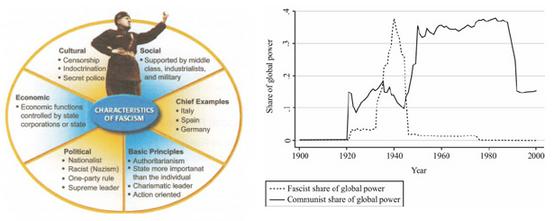
Information on key defining characteristics of fascism and its rise throughout the 20th century contrasted to communism
They visit every year on Mussolini's anniversary of death, dressed in black shirts and displaying fascist symbols Meloni herself does not participate personally, but her party members do have the same nationalist emotions Her policy on immigration consists of border control and resistance are against EU refugee quotas These notions originate from former fascist thoughts on preserving race and culture Her scepticism concerning the EU is based on the same concept, portraying Italy as a victim of foreign control and seeking independence as opposed to collaborating with foreign countries This is similar to historic fascism, the only difference being Meloni's Italy does not possess the military might and control Mussolini's regime had; however, this may only be because laws inhibit this
However, on the other side of the western world, Donald Trump's presidency exhibited greater nationalism, but with a different approach His campaign slogan, “Make America Great Again,” served as a means of altering people's perception of history, implying that America fell and needed great leaders to make her great again His administration concentrated on dividing people, assaulting immigrants, minorities, and political rivals, and weakening democratic institutions One of the most worrying aspects of his administration was the dissemination of false information, particularly regarding electoral fraud, which led to people losing faith in the democratic process That was evident on 6 January 2021, when a mob attempted to alter the result of the elections at the US Capital. That was not a riot alone; it reflected a larger issue with democratic values, much as there has been political violence with previous authoritarian administrations
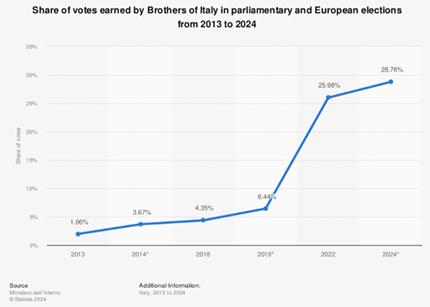
A worrying example for the Trump administrations power can be contrasted through the actions of what the Proud Boys and Oath Keepers did on the day of the riots These organisations who share similarities with Mussolini's Blackshirts employ violence as a means of intimidating people into sharing their views Trump's explicit words toward these organisations, particularly when telling the Proud Boys to “stand back and stand by,” provide insight into how rightwing figures inspire radical actions indirectly Despite Trump certainly not encouraging these groups, he is not condemning them either
Even with all these concerning parallels, there is a crucial distinction Trump attempts to undermine institutions, but the robustness of the American system ultimately diminishes his authority Courts rejected his accusations of electoral fraud, officials refused to alter outcomes, and although right-wing media encouraged and spread disinformation, independent journalism resisted Unlike Mussolini, who dismantled democratic institutions entirely, Trump had opposition that prevented him from being a full-on authoritarian figure That distinction is important right-wing movements today have elements of nationalism, victim-blaming, and undermining democracy, but they are restrained by modern political frameworks

Comparing both Trump’s America and Meloni’s Italy they do share some stark similarities Both sell nationalism, rewrite history to conform to their ideologies, and demonise their political rivals Both view themselves as guardians of the identity of a nation and utilise the media for spreading some sort of propaganda Yet their political systems differ in significant ways: Meloni's parliamentary system requires her to continue negotiating with other parties, whereas the American system, as flawed as it is, has thus far prevented outright authoritarianism from taking full control. So overall while I think that full blown fascist groups are not completely returning yet I do think that the way these “leaders” gain power in aspects are very similar So even if these movements are returning; how far will they actually go? To get a better idea how far such movements can escalate, we should examine how previous authoritarian movements transitioned from making speeches to seizing full control Earlier fascist movements didn’t seize control overnight; they steadily undermined democratic bodies through legal and illegal means Mussolini's ascension into power began with nationalism and a plan to put the nation back on its feet, much as with today's rightwing movements
It wasn’t, however, until after Mussolini's March on Rome in 1922 that Mussolini was requested to assume control Even this took several years of prohibiting opposition parties, manipulating the media, and employing armed factions before becoming a full dictatorship. Similarly, Hitler's Nazi Party began as a small faction, employing democratic means to acquire control before eliminating all opposition It is obvious that fascism is not a rapid takeover but a gradual one, often one based on seizing opportunities during crises as a reason for oppressive actions

Democratic governments today are not the same as they were in the early 20th century because they have safeguards to prevent fascists from seizing power Laws, independent courts, and active civil society groups prevent authoritarian control. Trump was unable to alter the outcome of the 2020 election, despite fake news and legal issues, demonstrating that these safeguards are effective These safeguards can, however, be shattered When democratic norms are undermined, for example, when elections are assaulted, the courts are politicised, and opposition is muzzled, it is simpler for leaders to disregard them History demonstrates that when democratic institutions become excessively fragile, authoritarianism frequently assumes control There are numerous reasons why right-wing movements turn authoritarian Big economic issues generally cause great changes politically, such as the Great Depression, which is what assisted Adolf Hitler and Mussolini's rise to power alongside the 1st World War Growing military might and silencing opposition also play a very crucial role Authoritarian regimes previously employed paramilitary forces for maintaining control, and the existence of groups such as the Proud Boys in the United States or nationalist militias in Europe is a concerning indicator
A concerning but modern example of how right-wing populism resulting in semi-authoritarianism is Viktor Orbán's Hungary Orbán was democratically elected, but he gradually undermined Hungary's institutions by seizing control of the media, altering the court system, and quieting his critics Yet he continues to behave like a democratically elected leader, despite being a known authoritarian by western culture and his own people
Despite these threats, I personally do not think that in the same form as it did in the 20th century While modern rightwing movements share some similarities with past authoritarian regimes; democratic institutions, media scrutiny, and public resistance make it unlikely that a complete fascist takeover will occur. However, I do agree that in the modern day that these movements have gained traction and have eroded away at some of the democratic values that brought the world together
So overall when considering whether fascism is on its return to the western world, it can be noted that right-wing movements today having shared ideas with previous authoritarian regimes Nationalist rhetoric, blaming minorities for issues, and dismantling democratic conventions are something which reminds us of how Mussolini and Hitler rose to power Examples of Donald Trump in America and Giorgia Meloni in Italy remind us how elected representatives capitalise on economic hardships and immigration anxiety Both took recourse to media, polarised politics, and projected themselves as guardians of the nation against perceived threats from within and beyond Still, there are a few essential differences among them as well
Right-wing populism nowadays differs from classical fascism Previous fascist regimes employed military force, direct dictatorship, and attempted expansion, but movements in the modern era operate within democratic frameworks Globalisation, technology, and social media have altered the face of politics, enabling national leadership messages to reach further but also subjecting them to greater scrutiny by the media and the rest of the globe While in parts I agree that some fascist views may be resurfacing in modern right-wing movements, fascist ideas have never fully disappeared Across Europe even after the wars fascist movements still gained traction For example, from 1967 to 1974 a Greek military junta attempted to rule over the islands with an iron fist but ultimately failed due to internal corruption and economic instability. Even Franco’s Spain as I previously mentioned did not dissolve until 1976. So, in my opinion its not is Fascism returning but to the extent that it is While movements from right wing leaders may gain traction from mentioning fascist movements and the papers may state the world is heading to a dark future; overall we should be focusing on how to please both sides and ultimately remember what united the globe overall


Written by Rufus C
Bridges have been around since a human was first faced with the challenge of getting over a span of water and since then, they have evolved at a remarkably fast rate The rapid evolution of engineering now allows bridges to have a central span upwards of 2 kilometres. In this project, I intend to explore many different types of bridges by building a series of replicas and measuring the weight they are able to support. As well as this, I also plan to modify the strongest bridge design so that it can support the most weight possible
When building bridges there are two main forces acting on the materials in the bridge: tension and compression Tension is where there is force pulling the material so it is tight; steel cables are generally used for this Compression is where there is a force pushing the material into itself; a mixture of concrete and steel beams are generally used for this. When building my own replica bridges, compression was far harder to construct than tension as it used far more pieces This is due to the force of compression often distributing the force unevenly across certain segments of the bridge
I first started out this project thinking that there was only a couple of different bridge types though I soon realised there was an incredible array of different designs including: beam, arch, suspension, cablestayed, cantilever and truss. As well as this I also discovered that there were other subsets of bridges for example inverted suspension, many different patterns of truss and many different versions of the arch bridge too

Because of this, I tried to find different versions of certain bridges and I found two bridges that suited all my needs: the inverted suspension bridge and the tied arch bridge both of which seemed relatively strong and had two points of contact

When selecting the types of bridges that I wanted to create, I had to look carefully at what bridges would be ideal to replicate out of Knex Because I wanted the bridges to have only 2 points of contact (1 on either side), I knew I was limited to a smaller selection of bridges

As I began building my bridges, I first designed and built different components that would be in tension and compression for different aspects of each bridge The hardest component to design was certainly the arch aspect of the tied arch bridge because it was curved and in compression, but I eventually settled on two layers of basic 2D framework connected together, as it was somewhat flexible yet maintained some strength under compression

Despite its weak appearance this is actually reasonably strong as the weights on the bridge pulls all of the cables supporting the bridge into tension; these cables all pull on the arch evenly therefore distributing the weight across the entire arch
When testing my bridges, like any other test, I made sure to have a set of variables to ensure it was a fair test My control variables were length (1 6 metres) and materials used (Knex only) Another possible control variable could have been weight though I decided not to have this as a variable because certain bridges do naturally weigh more than others, and this is therefore a feature of the bridge regardless of whether or not it makes it stronger
My independent variable was the design of the bridge, and the dependent variable was the weight each bridge supported The tied arch bridge managed to hold 5 Kg strongly but after a few seconds with a 7 5 Kg weight it collapsed and fell apart
The inverted suspension bridge on the other hand, was significantly stronger and managed to support 10 Kg before collapsing at 12 5 Kg due to a weak connection in the cables/ ropes


After completing both bridges, I was in no doubt as to which bridge I would be able to modify and upgrade to make stronger - the inverted suspension bridge In the inverted suspension bridge, it was clear which points needed to be upgraded and made stronger; the wire/cable and the frame of the bridge at the top I designed my own cable with significantly more strength in tension than the first iteration As well as this, I doubled the thickness of the upper frame section so that it was stronger in compression and spread the force more evenly. Finally, I improved the strength of the cables’ connection to the upper frame by increasing the number of contact points thus spreading the weight evenly across it On the left you can see the original design whilst on the right is the improved version It is twice the size and has a much stronger connection to the cables as well as more triangles to maintain the rigidness of the framework
Overall, after designing and building multiple bridge prototypes, I selected the inverted suspension bridge as the optimum design to modify and improve I enhanced it by thickening the upper frame connection as well as increasing the strength of the cable The control variables stayed the same throughout the experiment (a 1 6 metres wide span and using only Knex as a building material) The original inverted suspension design held 10 Kilograms But following the improvements noted, the modified bridge held upwards of 25 kilograms. In conclusion, the best, strongest, bridge when building with Knex is undoubtedly an inverted suspension bridge

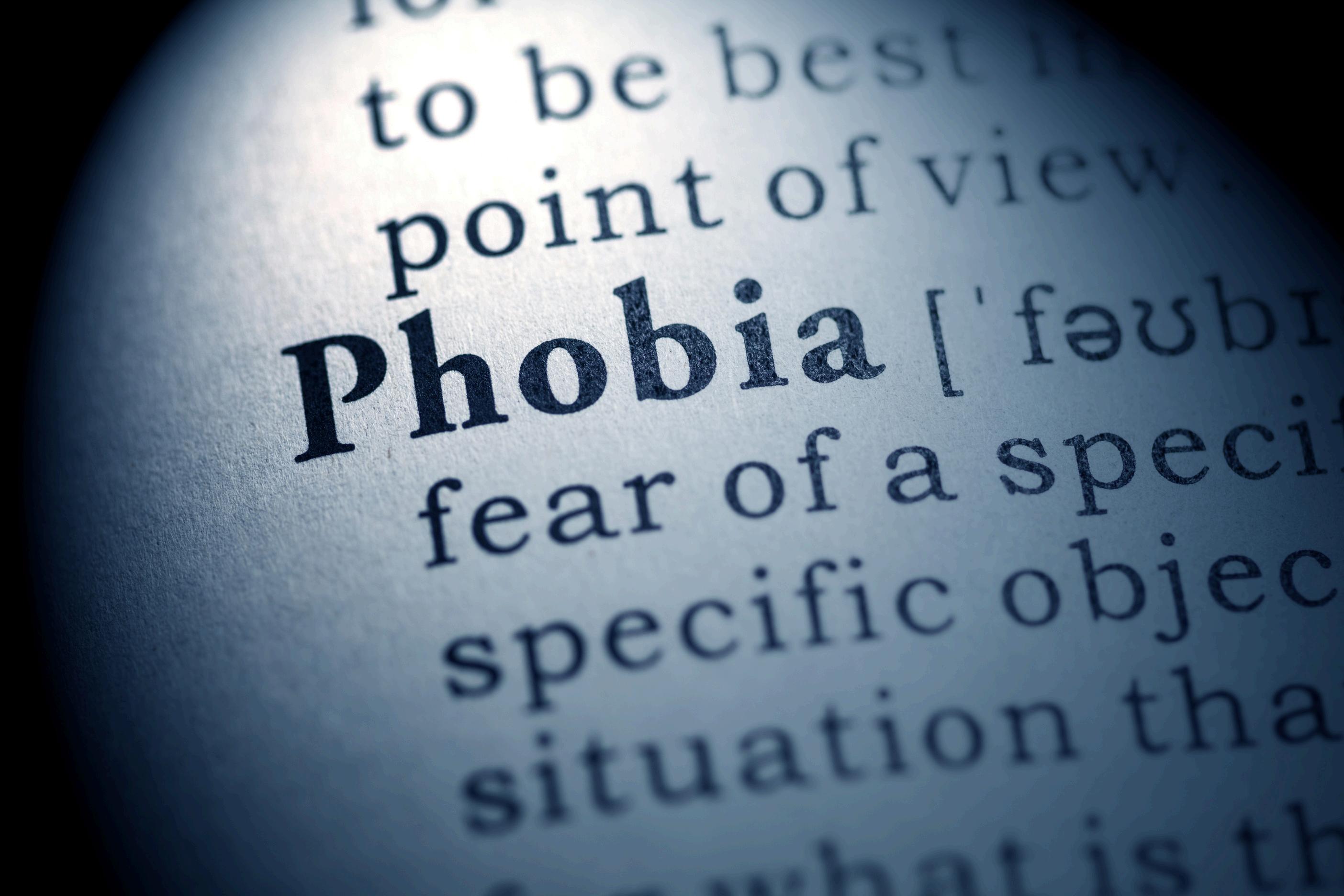
Written by Samuel C
Phobias are a common part of everyday life, but a common misconception about phobias are that they are a slight fear of something, like the type of unsettling feeling you get when you walk home in the dark In actual fact, a phobia is defined as “ a persistent, abnormal and irrational fear of something” Frequently, a person with a phobia will know that their phobia can’t actually hurt them, but they still feel abnormally frightened and scared around it.
Common symptoms of a phobia include sweating, hot flushes or chills, rapid heartbeat and shortness of breath
The two different types of phobias are specific phobias and complex phobias
Specific phobias are ones that are about a specific object or situation and include animal phobias, like fears of dogs or spiders, natural environment phobias, such as heights or deep waters, situational phobias, like visiting the dentist or flying, and body-based phobias, such as blood or injections Complex phobias, however, are less of a phobia around a specific thing and they can start to have a disruptive impact on the sufferer’s life The most common of these phobias is social phobia, also known as social anxiety, which is the fear of social situations like public speaking or talking to somebody new
Another is agoraphobia, which is commonly associated with being a fear of open spaces. In actual fact, agoraphobia is the fear of places where it could be difficult or embarrassing to get out of, and where you might not be able to get help if you have a panic attack (Mind, February 2021)
As well as there being different types of phobias, scientists believe that there are also different causes And this leads me on to what I want to show you today - everything has a root, even if it is not always obvious These are genetical causes, learned behaviours and traumatic experiences In this essay, I will give an overview of the roots of phobias generally agreed upon – genetical causes, learned behaviours and traumatic experiences, as well as trying to show to you how many factors influence the development of a phobia
How do our genetics influence what phobias we have?
Many people believe that our phobias are entirely influenced by our own experiences. However, research shows that parents can pass phobias down to children through the child’s observation of the parent but also through genetics. This branch of genetics is called epigenetics, and is defined as the study of “the changes in organisms caused by modification of gene expression” Simply, epigenetics studies how the genes change the way they work rather than the actual change in the genetic code This is done through the body controlling which genes should be “ on or off” in response to a particular stimulus

It has also been discovered that, rather than the concepts of “nature and nurture” being two separate things, personal experiences are active drivers of change in the central nervous centre Through personal experiences, the genes in the human body can react differently to objects that it could perceive as a threat, and over time repeated reactions can slowly get consolidated into a person ’ s genes These changes can then be passed down from parent to child, which explains why families often share phobias, and sometimes the parent has a reason, but the child does not (Iva B Zovic, J David Sweatt, 2013) This is one of the main ways that genetics have a significant effect on phobias – the epigenetic changes in the parents can be passed down to the offspring, meaning that a particularly traumatic event experienced by an ancestor could affect a person ’ s phobia. Now, I will go into depth about how your own learned behaviours affect the phobias you have
How are phobias influenced and created through learned behaviours?
Learned behaviours influencing phobias can be shortened down into a process called “the two-process model” (Mowrer, 1947) The two-process model outlines the ways phobias can develop through a combination of classical and operant conditioning, 2 outlined below. Classical conditioning was first discovered by Ivan Pavlov, through his famous “Pavlov’s Dogs” experiment Simply, it is learning to associate an involuntary response and a stimulus In the experiment, a bell sound was played when some food was presented to the dogs Eventually, just playing the bell sound initiated the dog’s natural response to seeing food Operant conditioning, however, is associating an action to a consequence, like how mice can learn to push down a tab if food appears afterwards (Kendra Cherry, 2024).

These two types of conditioning work together in creating phobias – first, the classical conditioning works, where a child learns to associate a stimulus with a particular feeling or response, in this case, fear This can be done in many ways – for example, if a parent screams at a spider when a child is present, the child can learn to fear the spider However, without the work of operant conditioning, the subject would eventually realise that the phobia cannot hurt them and learn to not fear it The operant conditioning works from negative reinforcement, which is when the absence of unpleasant stimuli strengthens a behaviour For example, if the child who had learnt to fear the spider saw another one and felt scared, he could move away from the perceived threat This would stop him from feeling scared, and so the action of moving away from the threat is negatively reinforced So, to summarise, the classical conditioning is responsible for associating a stimulus with a response, and the operant conditioning, using negative reinforcement, is responsible for enforcing the act of avoiding the stimulus, making the initial fear stronger.This is key in why exposure therapy works, as by exposing yourself to your phobia the operant conditioning is undone, and the sufferer realises that the phobia cannot hurt them. However, classical conditioning can also be undone through techniques like aversive therapy, which is when a sufferer, when indulging in a habit like avoiding a phobia, gets an unpleasant stimulus like an electric shock This is an example of counterconditioning, and it is supposed to undo the effect of classical conditioning by associating the act of avoiding the phobia with a bad consequence that outdoes the good consequence of avoiding the phobia Now, I will talk about personal traumas and their effect on influencing phobias
Personal experiences and traumas
Generally, personal experiences and traumas developing phobias are very similar to learned behaviours, but while traumas, as well as learned behaviours and genetics, influence specific phobias (such as a fear of dogs or spiders) traumas are more influential than learned behaviours or genetics when it comes to complex phobias
The complex phobia I will talk about now, agoraphobia, is an intense fear of being in a situation that might be difficult or embarrassing to get out of, especially if a panic attack occurs Panic attacks are one of the main causes of agoraphobia, and panic attacks are sometimes caused directly after a traumatic experience A phobia can develop from a direct traumatic experience, and often these experiences are the direct contributors to forming a phobia Phobias can also be formed from vicarious learning, which is observing or hearing about a traumatic experience Panic attacks generally start directly after a traumatic experience This can contribute to agoraphobia if the fear of having a panic attack gets severe, meaning that a traumatic experience can directly contribute to complex phobias as well as specific phobias Now that I have explained how traumatic experiences influence phobias, I will move to my conclusion, where I will sum up my points and ideas
In my essay, my aim was to show to you the many different ways in which phobias are influenced and created, whether it is by genetics, learned behaviours or traumatic experiences.A lot of people think that some phobias are just randomly decided, given the fact that they have not had an experience with a particular stimulus to a phobia. I know that, before I did this research, I certainly thought the same thing I hope that through my essay today I have shown you that everything has a meaning or origin, especially phobias Epigenetics, for example, is a fairly unknown area of genetics, and it plays a key role in influencing phobias Learned behaviours are a bit more well known, but the only main factor people associate with phobias is personal experiences and traumas, even though there are so many factors that go into this topic Phobias are a thing that everyone experiences, and oftentimes people might not understand the origins of their phobias, and this is why I think this topic is so important I want people to be able to look at their phobias and see where they have come from and have been influenced, not just be left to speculate about them And so, I end my essay with an important message – explore your past and the potential causes of your phobias Some will be obvious and some a lot more hidden But everything about you has an origin and a cause, and it’s up to you to find it
Written by Sienna T

Have you ever ordered a big juicy burger from a fast-food restaurant only to be served something that looks detestable? That misleading image is an example of neuromarketing in action. Neuromarketing is the way in which your brain responds to certain advertisements and brand related messages Scientists discovered that you can use brain imaging to monitor the activation and deactivation of neural circuits during the buying process and then predict with accuracy whether a person would purchase a product, so they decided to use this technique to create more impactful advertisements However, since neuromarketing influences consumers' subconscious responses, it can limit their ability to form independent opinions about a product.
This has then caused debate as to the ethicality of neuromarketing with an argument from a scholarly essay “Is Neuromarketing Ethical? Consumers say Yes. Consumers say No” which discusses the privacy concerns of neuromarketing. Harvard Business Review also published an article, “When Neuromarketing Crosses the Line”, where 2 scientists explained the speculation about these ‘privacy issues’ and then explained reasons why they were not a proper problem. In 2012, The Neuromarketing Science & Business Association had to announce the code of ethics of neuromarketing to ensure that there is an international standard for neuromarketing In this analysis of neuromarketing I will cover a wide variety of topics on the subject of this issue. I will elucidate the neuroscience behind neuromarketing, explain the tactics and methods of neuromarketing, then I will explain some examples of neuromarketing and finally analyse the ethical and unethical aspects of this topic.

By doing so, they help avoid any abuse of private information and ensure that consumers are not manipulated in ways that might challenge their independence. Clarity in the use of these machines is crucial, permitting consumers to feel informed and confident that their neurological responses are being used primarily for improving product development and marketing strategies, rather than misusing their personal information Moreover, as neuromarketing continues to grow and progress, ongoing debates about its ethical implications will aid in forming regulations that guarantee that there is a balance between innovation and consumer protection.
Next, after the research is complete, scientists will need to use certain methods of neuromarketing in their stores So what are the common tactics and methods of neuromarketing in shops? Well, have you ever noticed how the brightly coloured packets of gum and sweets lie right next to the checkout in a supermarket? Have you ever noticed how to get down an escalator in a department store, you have to circle another lap around the clothes racks? Most shops, use methods like these to convince consumers to purchase their products. Neuromarketing, in stores, is all about creating an enhanced environment for the customer It is all about making the products more appealing by being more attractive to the senses, emotions and subconscious mind The merchandising or marketing team usually sets out the store with multiple steps, in order to create the most profitable shop which they can First of all, the designers will think about the strategic placement of the store, usually they will use a funnel design A funnel design means that the shop will narrow as the consumer walks through. This will slowly guide them to the checkout, but it maximises the chances for additional purchases as they walk through
Then they will need to think about the ambience and lighting Warm lighting can generate a relaxed feel whilst brighter lights can stimulate quick decisions. The next step for creating an environment which will help draw customers in is sensory marketing Have you ever noticed how beauty stores always smell fragrant from a while away? Food places like café’s use this same principle to make consumers feel hungry when they walk past
The final technique which they would use is having specific offers or loyalty apps For example, think of your closest supermarket. They all have a loyalty card, one of which you probably own. However, you probably think that it is a great way to save money on deals and offers Though, the company will always have a benefit For example, the Tesco Clubcard – it is simple, if you own a Tesco Clubcard, you can have offers on certain grocery items However, Tesco doesn’t use an EEG or an fMRI, they use their Clubcard to track purchases and then from this information they keep
more of certain produce in stock From your purchase history, they can also create targeted offers and personalised adverts which can then make the customer buy more products from Tesco rather than other stores In 1994 Tesco’s chairman Lord Maclaurin claimed that “What scares me about this is that you know more about my customers after three months than I know after 30 years ” This shows that Tesco can take the little information from your purchases and according to Loyalty Reward co can increase frequency of visits to Tesco’s by 16%
Finally, all of these methods of neuromarketing in shops and stores can appeal to HENRYs (high earners, not rich yet) A HENRY could also be referred to as the ‘working rich’ Usually, they work hard and earn a fair income but spend their money on lavish and high-end products A big neuromarketing tactic is to ensure that store owners have a luxury presentation of their shop which can attract HENRYs because of their want for premium shopping experience

The other method which can entice HENRYs is having influencer endorsements Having a famous brand ambassador can trigger the areas of the brain which is related to decision making HENRYs are more likely to purchase a product if they see an influencer who they have heard of or follow-on social media promoting the product. In summary, neuromarketing in shops develops the research from EEG’s and fMRIs and other research methods and applies it to creating a shop which sells the most desirable products
Now, how has neuromarketing affected people’s everyday lives? Well, firstly, one of the biggest examples of questioning neuromarketing’s ethicality was in 2015, in Mexico In 2012, President Enrique Peña Nieto and his party (Institutional Revolutionary Party) used neuromarketing as part of their campaign. They used this form of research by measuring volunteers’ brain waves, reactions and heart rate changes to the Presidents campaign According to New York Times, they also hired facial coding firms from the USA and Spain to analyse reactions to debates from voters
Although it doesn’t sound like they were unethically using information to manipulate the public into voting for them, the voters didn’t feel ready for an in-depth analysis and had concerns that they wouldn’t have full choice over who they voted for. The Mexican government had to vow to stop using neuromarketing to study voters However, there are many examples of brands using neuromarketing successfully to advertise their product Chanel, Pepsi, Coca-Cola, Xbox gaming and Dunkin’ doughnuts These brands have had some of the most famous neuromarketing campaign, predominantly using the tactics explained earlier in the essay Neuromarketing is only 77% accurate so far, but it can offer incredible advantage over customary promoting systems and, in the future, maybe 100% success will be achieved.
Finally, is neuromarketing ethical? Well, one of the most controversial aspects of neuromarketing is the ability for neuromarketers to push an irresistible buy button in your brain, therefore forcing us to want things subconsciously This ‘buy button’ could be a way for neuromarketers to manipulate consumers into purchasing their product and this could be incredibly unethical. However, the human brain is made up of billions of complex neurones so there definitely is not a simple ‘buy button’ Furthermore, neuromarketing is not advanced enough for researchers to read minds They can see which parts of the brain are working, and they can predict emotions based on heart rate and facial expression But they cannot fully see everything which the human brain thinks This theory of the ‘buy button’ has been disproved in many articles such as: The Science of Persuasion and also Neuromarketing Science Marketing. Moreover, on November 9th, 2012, the Neuromarketing code of ethics was launched by NSMBA which does limit the ability of neuromarketers using private information unethically It was established to address three very prevalent issues: to restore the confidence of the public in the legitimacy of neuromarketers, to ensure that neuromarketers respect and protect the privacy of research participants and to protect the buyers of neuromarketing services
However, there are still brands which are controversially using this form of marketing, particularly food brands For example, Jason Halford, professor of biological psychology and health behaviour at the University of Liverpool and past president of the European Association the Study of Obesity a study in the US suggested that when obese children see the logo of an ultraprocessed food brand, their brain reacts to it This implies that children have a vulnerability to marketing which could cause widespread legal issues. If children are being exploited for commercial gain at
the expense of their health, the food firms could face litigation The guardian explains that food marketing could ‘hijack’ children’s brains If this is true, it could completely change people’s views on neuromarketing
Overall, due to the ‘buy button’ being disproved neuromarketing has been seen on the whole as ethical until the latest argument of food marketing targeting children and exploiting them whilst their health deteriorates due to the health problems related to the product
Therefore, up until 2018, neuromarketing was seen as fully ethical, then after this new research on food marketing, people are starting to question it again
In conclusion, Neuromarketing is a form of cognitive neuroscience which can help brands advertise their product The research is done using EEG’s, fMRI’s, eye tracking and facial coding. In shops, the merchandising and marketing team will lay out the shop so that the brain will respond to the ambience and atmosphere in a way which makes consumers more likely to purchase a product They also make sure that their shop appeals to HENRYs In my opinion, neuromarketing is ethical because neuromarketers cannot force a person to buy something, they cannot control people They can influence your opinion with good advertisements though I believe that because there is the neuromarketing code of ethics in place, any unethical neuromarketing – like the food marketing which could have been harmful to children – is illegal and so cannot mean that neuromarketing is completely unethical; they are breaking the law so illegal neuromarketing cannot be considered unless no legal action to stop this is enforced In summary, whilst marketers cannot read minds, all neuromarketing which follows the NSMBA code of ethics is ethical and just
ADI P WHY DID YOU CHOOSE YOUR ESSAY THEME?
I have always been interested in technology and its global impact Also, I have been interested in documentaries and while exploring various topics, I watched a documentary called The Battle for the Nile (2016) It introduced me to the geopolitical tensions surrounding the GERD between Ethiopia’s desire for development, Egypt’s fear of water loss, and Sudan’s thirdparty role What intrigued me most was the diplomatic negotiations and how such a project could either fuel conflict or cooperation
WHICH SUBJECTS DO YOU ENJOY THE MOST AND WHY?
I had always been fascinated with Computer Science, Sports, especially Basketball and Volleyball, as well as Maths and Physics as all these subjects shape me every day in my education towards my future career and staying active in sports, as a passion
ARYAN J WHY DID YOU CHOOSE THIS ESSAY THEME?
I chose the topic of HPV vaccination and public health because it connects the dots between science and real-world outcomes I wanted to explore how increasing accessibility and combating misinformation can save lives, especially in underserved communities
HOW HAS BEING A SCHOLAR CHANGED YOUR PERSPECTIVE ON EDUCATION AND LEARNING?
Being a scholar has taught me to think beyond the classroom It’s made me more curious, reflective, and eager to connect subjects to reallife issues
IF YOU COULD DESIGN YOUR OWN SCHOLAR SESSION, WHAT WOULD IT BE AND WHY?
I’d create a session on The Ethics of Artificial Intelligence It would explore how AI affects decisions in healthcare, law, and everyday life mixing science, ethics, and real-world dilemmas
WHAT HAS BEEN YOUR FAVOURITE SCHOLAR SESSION THIS YEAR AND WHY?
My favourite scholar session this year must be Mr Allen-Monk’s session about the ethics of AI as it is a transformative, nascent piece of technology being used for remarkable potential as well as bringing concerning consequences that must be addressed and understood to progress a safer future
HOW HAS BEING A SCHOLAR CHANGED YOUR PERSPECTIVE ON EDUCATION AND LEARNING?
Being a scholar has changed my perspective on education and learning as the vast range of subjects covered through my scholar sessions have shown me the truth of areas beyond what is told within school, helping me learn, understand, and form beliefs based on the entire truth
WHICH SUBJECTS DO YOU ENJOY THE MOST AND WHY?
I enjoy Biology, Economics, and Drama. Biology helps me understand life on a deeper level, Economics helps me become a more critical thinker, and Drama offers a way to be creative and to build confidence
WHAT HAS BEEN YOUR FAVOURITE SCHOLAR SESSION THIS YEAR AND WHY?
My favourite session was the Law session with Mr Hagen It really opened my eyes to justice and how the legal system works I enjoyed talking about real-life cases and seeing how law affects everyday life
WHAT ARE YOUR FUTURE ACADEMIC AND CAREER ASPIRATIONS?
I plan to study Biology, Economics, and Maths at A-Level In the future, I’d like to work in global health or healthcare policy, combining science and economics to solve real-world challenges
EMILY A WHY DID YOU CHOOSE YOUR ESSAY THEME?
I chose my essay theme because it is very important at this moment America has a big influence on the world and it’s president can affect many around the globe Trump is a very controversial figure and many question how he rose to this level of power and I was interested in researching for that
WHAT ARE YOUR FUTURE ACADEMIC AND CAREER ASPIRATIONS?
I would like to go to university and study law and then become a criminal prosecutor
WHICH SUBJECTS DO YOU ENJOY THE MOST AND WHY?
I enjoy History and English because I like learning about influential people and common ideas in the past, both in history and in influential books and poetry reflecting how life was like at the time
ELEANOR R WHY DID YOU CHOOSE YOUR ESSAY THEME?
I chose to write about the Enigma code because I find both cryptography and the work of Alan Turing incredibly fascinating The complexity of code-breaking and the way it influenced the outcome of World War II really captured my interest, especially how logic and mathematics were used to solve such a crucial problem.
WHAT HAS BEEN YOUR FAVOURITE SCHOLAR SESSION THIS YEAR AND WHY?
My favourite scholar session this year was Mr Allen-Monk’s talk on artificial intelligence It was really engaging to explore different dilemmas involving AI and think about how this technology is already shaping our world I liked how it combined ethical questions with real-life applications
WHAT HAS BEEN YOUR FAVOURITE SCHOLAR SESSION THIS YEAR AND WHY?
My favourite scholar session was the Mr Hagan’s about law because I like knowing about important laws that shape our society
HOW HAS BEING A SCHOLAR CHANGED YOUR PERSPECTIVE ON EDUCATION AND LEARNING?
Being a scholar made me see learning differently It’s not just about grades, it’s about understanding, thinking, and discovering new ideas
WHO ARE YOUR ROLE MODELS AND HOW HAVE THEY INFLUENCED YOU?
My role model is Maya Angelou as she inspires me with her powerful words and life story She’s shown me how language can make a difference and has motivated me to use my voice to express myself and stand up for what I believe in
WHICH SUBJECTS DO YOU ENJOY THE MOST AND WHY?
I particularly enjoy science, maths, and languages because they each challenge me in different ways Science and maths allow me to think critically and solve problems logically, while languages open up new ways of communicating and understanding different cultures. Together, they help me develop a wide range of skills and keep learning exciting.
WHAT ARE YOUR FUTURE ACADEMIC AND CAREER ASPIRATIONS?
I hope to study medicine at university and eventually become a paediatric surgeon I’ve always been interested in science and how the body works, and I’m passionate about helping others, especially children I know it’s a challenging path, but it’s one I’m very motivated to pursue
HOW HAS BEING A SCHOLAR CHANGED YOUR PERSPECTIVE ON EDUCATION AND LEARNING?
Being a scholar has given me the chance to explore subjects and ideas that I wouldn’t normally come across in a typical school day It’s shown me how valuable it is to be curious and open-minded, and how learning can go far beyond the classroom
HARRY W
WHY DID YOU CHOOSE YOUR ESSAY THEME?
I chose to write about cybercrime because it's a serious modern issue As we rely more on technology, protecting ourselves online becomes more important I wanted to explore why it's so hard to stop and prosecute these crimes
WHAT HAS BEEN YOUR FAVOURITE SCHOLAR SESSION THIS YEAR AND WHY?
A debate-based session on current affairs was my favourite. It pushed me to speak confidently, think quickly, and see different sides of an issue
IF YOU COULD CREATE YOUR OWN SCHOLAR SESSION, WHAT WOULD IT BE ABOUT AND WHY?
It would be about digital safety and misinformation As we spend more time online, learning how to think critically and stay safe is more important than ever
JAMIE L WHY DID YOU CHOOSE YOUR ESSAY THEME?
I chose this essay theme as I feel it is relevant to the political landscape that is present at the moment
WHAT ARE YOUR FUTURE ACADEMIC AND CAREER ASPIRATIONS?
1think in my future I would aspire to be a lawyer I think the job sounds intriguing and learning how the country is run would be very interesting
WHAT HAS BEEN YOUR FAVOURITE SCHOLAR SESSION THIS YEAR AND WHY?
My favourite scholar session this year would have to be our lesson on AI as I taught me about how companies are using AI for improving every part of their business
WHICH SUBJECTS DO YOU ENJOY THE MOST AND WHY?
I enjoy English for its creativity and self-expression, and History because it helps me understand how the world works Both subjects encourage deep thinking and discussion
WHAT ARE YOUR FUTURE ACADEMIC AND CAREER ASPIRATIONS?
I’d like to study law or cybersecurity. Both areas interest me because they involve justice, ethics, and protecting people in an increasingly digital world.
HOW HAS BEING A SCHOLAR CHANGED YOUR PERSPECTIVE ON EDUCATION AND LEARNING?
It’s shown me that learning isn’t just about exams it’s about curiosity, growth, and thinking critically about the world around us
HOW HAS BEING A SCHOLAR CHANGED YOUR PERSPECTIVE ON EDUCATION AND LEARNING?
Being a scholar has changed my perspective on learning as through as its help me think more critically and think about a wider perspective than just a classroom
WHICH SUBJECTS DO YOU ENJOY THE MOST AND WHY?
I enjoy economics as a new subject as it appears everywhere in everyday life
IF YOU COULD CREATE YOUR OWN SCHOLAR SESSION, WHAT WOULD IT BE ABOUT AND WHY?
If I could create my own scholars lesson I think I would make it about how the stock market truly works I think that it would be very interesting to see what truly makes the worlds finances tick
RUFUS C
C
WHY DID YOU CHOOSE THIS ESSAY THEME?
II really enjoy engineering so I was delighted when I found out that I could build a project instead of just writing. When I found out about this, I had just finished designing and building the longest bridge I could possibly build so for the essay I decided to try and build the strongest
IF YOU COULD CREATE YOUR OWN SCHOLAR SESSION, WHAT WOULD IT BE ABOUT AND WHY?
If I were to create my own scholar’s session, I would host a competition in which everyone must try to design and build a bridge out of lollipop sticks and large paperclips to see who can build the strongest one possible
WHAT HAS BEEN YOUR FAVORITE SCHOLAR SESSION THIS YEAR AND WHY?
My favourite scholars session this year was certainly the scholar’s trip as we were able to visit and see many different planes and vehicles used in WW 1 and 2 As well as this, we were able to see the fastest plane ever built – the blackbird SR-71 which was very interesting
WHICH SUBJECTS DO YOU ENJOY THE MOST AND WHY?
I enjoy maths and physics the most because they are interesting and intriguing to study
WHAT ARE YOUR FUTURE ACADEMIC AND CAREER ASPIRATIONS?
I intend to become an engineer of some sort and build and develop new technology or buildings
WHY DID YOU CHOOSE THIS ESSAY THEME?
I chose my essay theme as I was very interested in the Psychology session at the start of the year I looked further into the discussion about nature vs nurture and decided to delve specifically into the way phobias are formed and influenced
WHICH SUBJECTS DO YOU ENJOY THE MOST AND WHY?
I really enjoy Drama, as I really like public speaking and delving into other worlds and characters, likewise through books and movies I also really love History as, similarly to Drama, it teaches us about our past and gives us advice on how to move forwards
IF YOU COULD CREATE YOUR OWN SCHOLAR SESSION, WHAT WOULD IT BE ABOUT AND WHY?
I would have to go on a topic around nature I do almost all my revision sitting outside, alone, at the bottom of my garden. Being able to sit and focus among nature means that I can get into the headspace of learning much easier than if I was in the house with all my family still doing stuff and running about. In addition, if I ever needed to take a break, it would be sufficient enough to sit and relax and listen to my instrumental music, or the birdsong, and do some deep-breathing exercises Relaxation and stress relief is a topic that I think is lost on a lot of children today, especially in the leadup to important exams, and I would love a scholar’s session raising awareness about the powerful role nature plays in reducing stress
WHAT HAS BEEN YOUR FAVORITE SCHOLAR SESSION THIS YEAR AND WHY?
My favourite session, although I did enjoy the one about Psychology, was the one done by Mr Hagan Delving into human rights and the legal system was really interesting to me, and I loved his topic in his session last year as well
WHO ARE YOUR ROLE MODELS AND HOW HAVE THEY INFLUENCED YOU?
my role model is my mother Since my sister and I joined the senior school, she has been training hard to be a primary school teacher I really admire her for keeping her love of learning alive in her life, as she always puts in the maximum effort into teaching and creating lessons. I sometimes forget that after you leave school, you still have opportunities to learn new things, and you still have a whole life ahead of you to do that. My mother is a physical embodiment of this ideal, as she is always finding out new bits of information and works hard to relay this information, both to my sister and I and her primary school class
SIENNA T WHY DID YOU CHOOSE THIS ESSAY THEME?
I chose this essay theme because I wanted to understand why people sometimes buy the most pointless things when you don’t need it It has happened to me many times: this celebrity has it so I need it, maybe it will be useful in the future But I never had the intention of buying it before entering the shop I wanted to understand why this is, and this is because of neuromarketing Then, after researching, I wanted to understand whether this was ethical or not.
For my career I would love to do something within the performing arts I am very interested in drama, singing and dancing but I would also enjoy a job within being a news reporter
WHO ARE YOUR ROLE MODELS AND HOW HAVE THEY INFLUENCED YOU?
Briar Nolet is a particular influence for me because she found out that she had epilepsy triggered by dance but she still took part in dance and even starred in a dance tv show and now she is a professional dancer
WHICH SUBJECTS DO I ENJOY THE MOST AND WHY?
I enjoy performing subjects like drama and music I also enjoy English because I can be creative and there is no one specific correct answer. Finally I enjoy learning biology and academic PE because I like to understand how the human anatomy works and I also like to learn about our responses to sports

IF YOU COULD CREATE YOUR OWN SCHOLAR SESSION, WHAT WOULD IT BE ABOUT AND WHY?
I would probably create my own scholars session about injuries in sports – what they are caused by and how to treat them because it would help me to know what to do when I injure myself and it would be very valuable information

"The beautiful thing about learning is that no one can take it away from you" BB King

